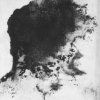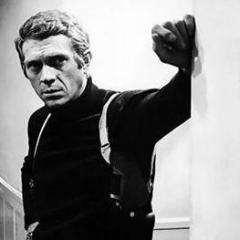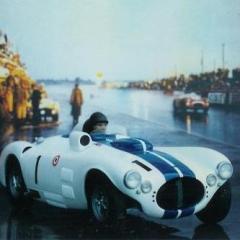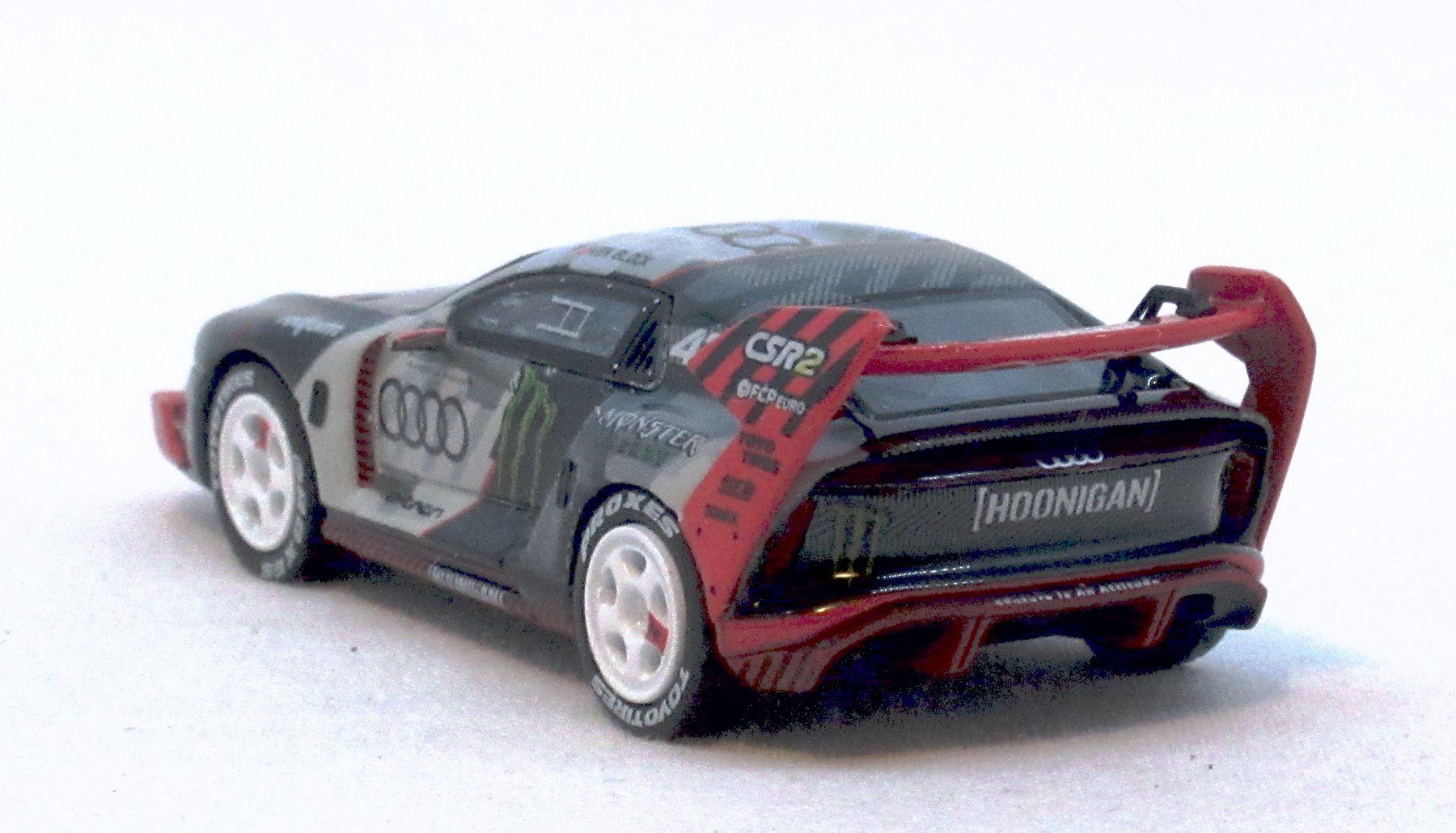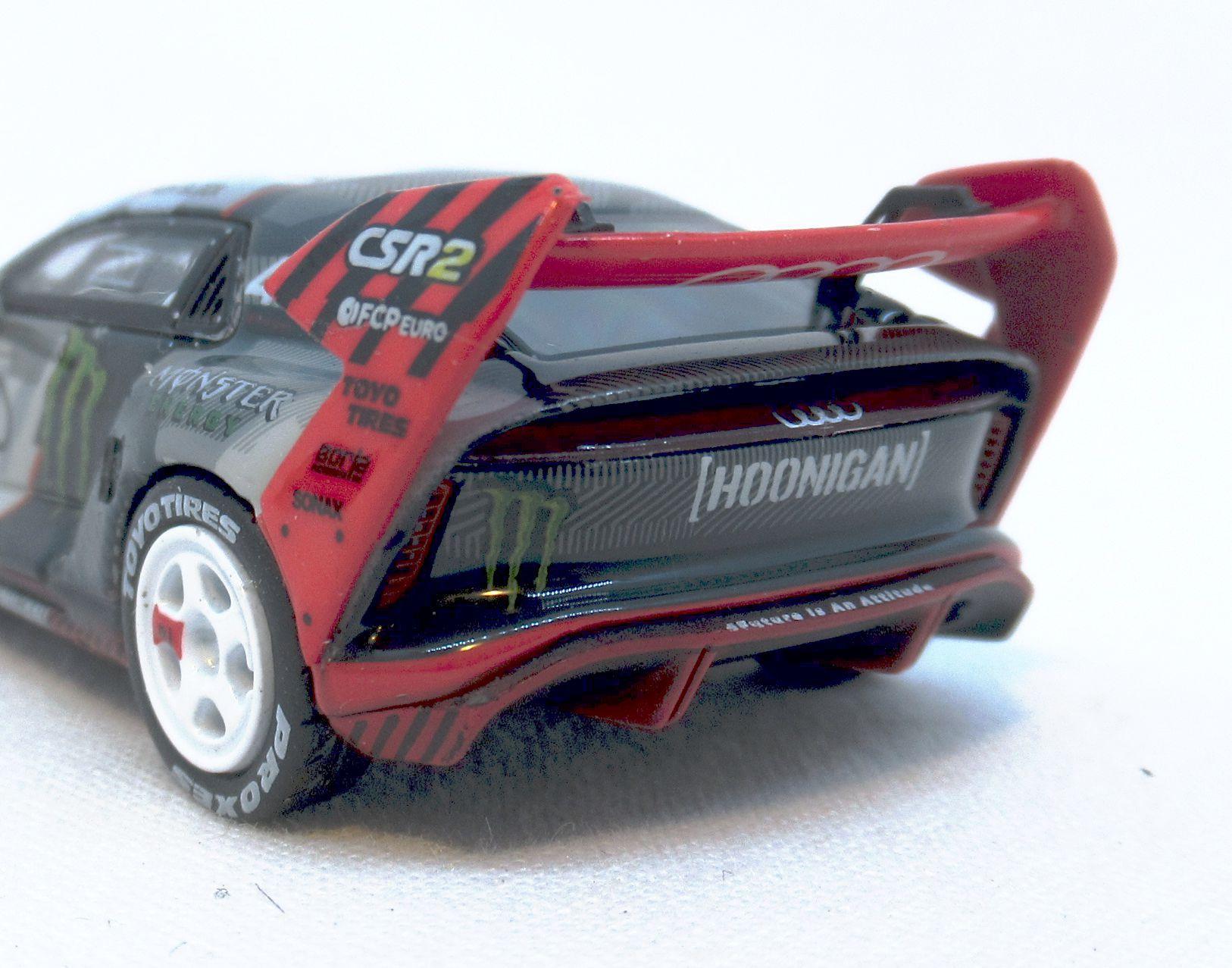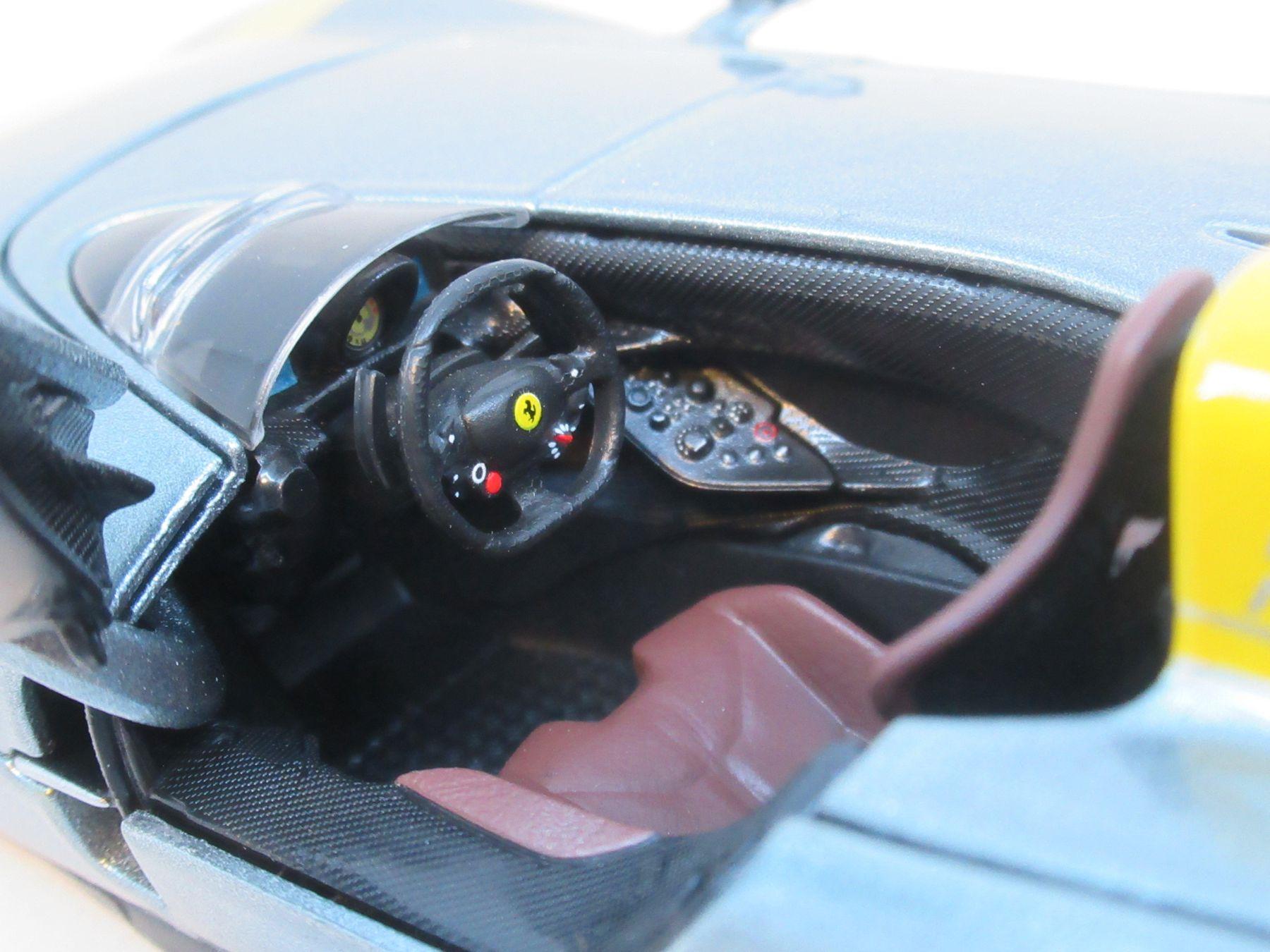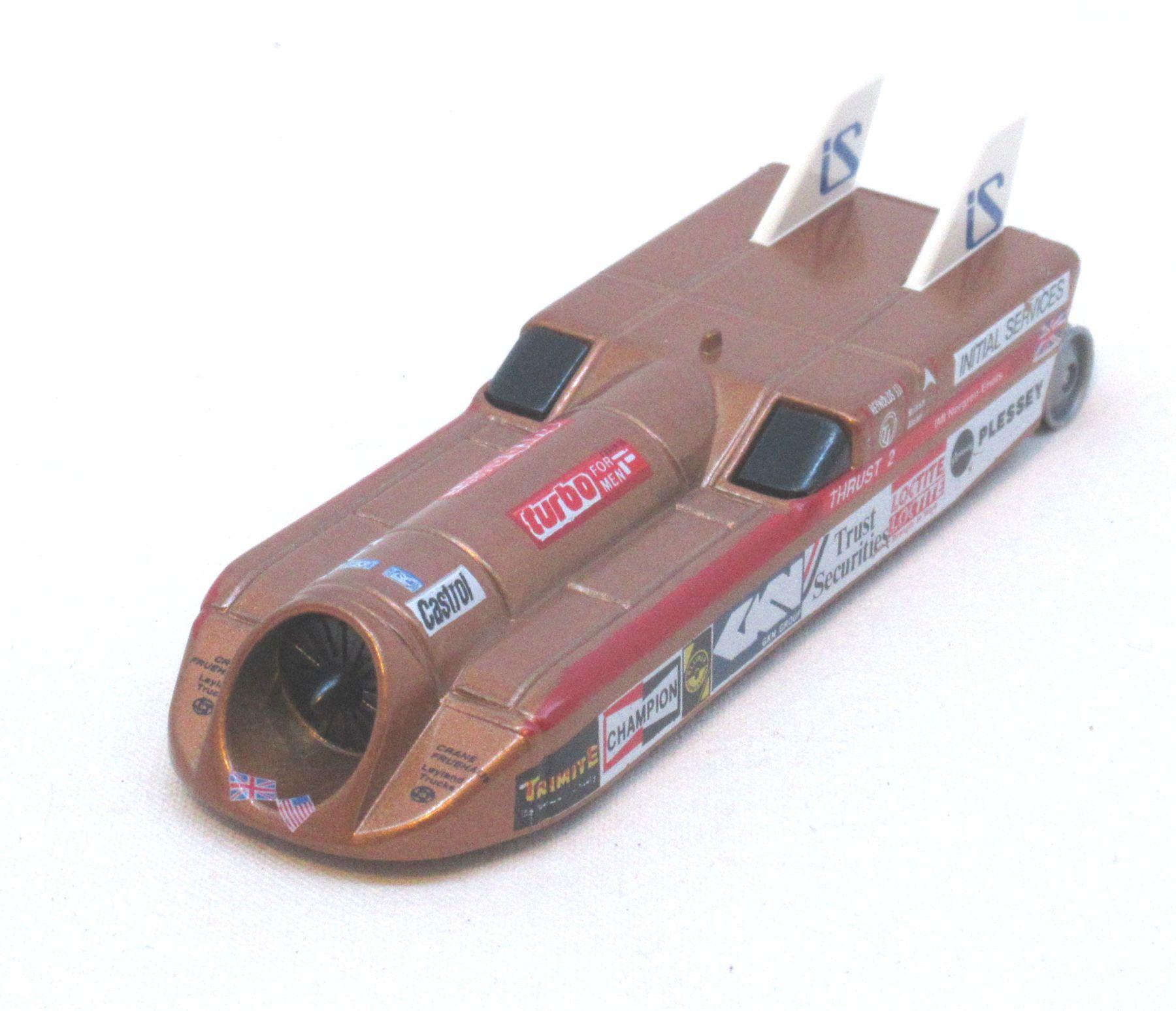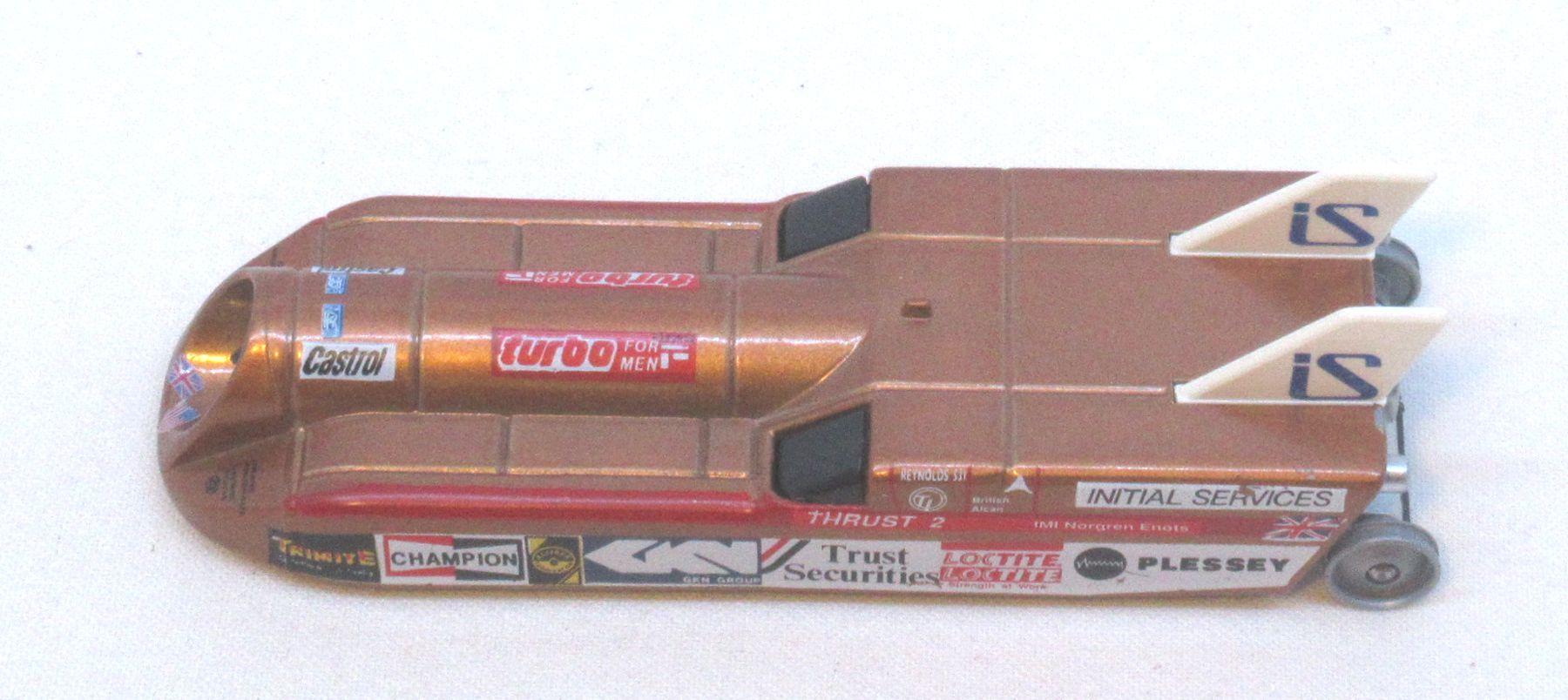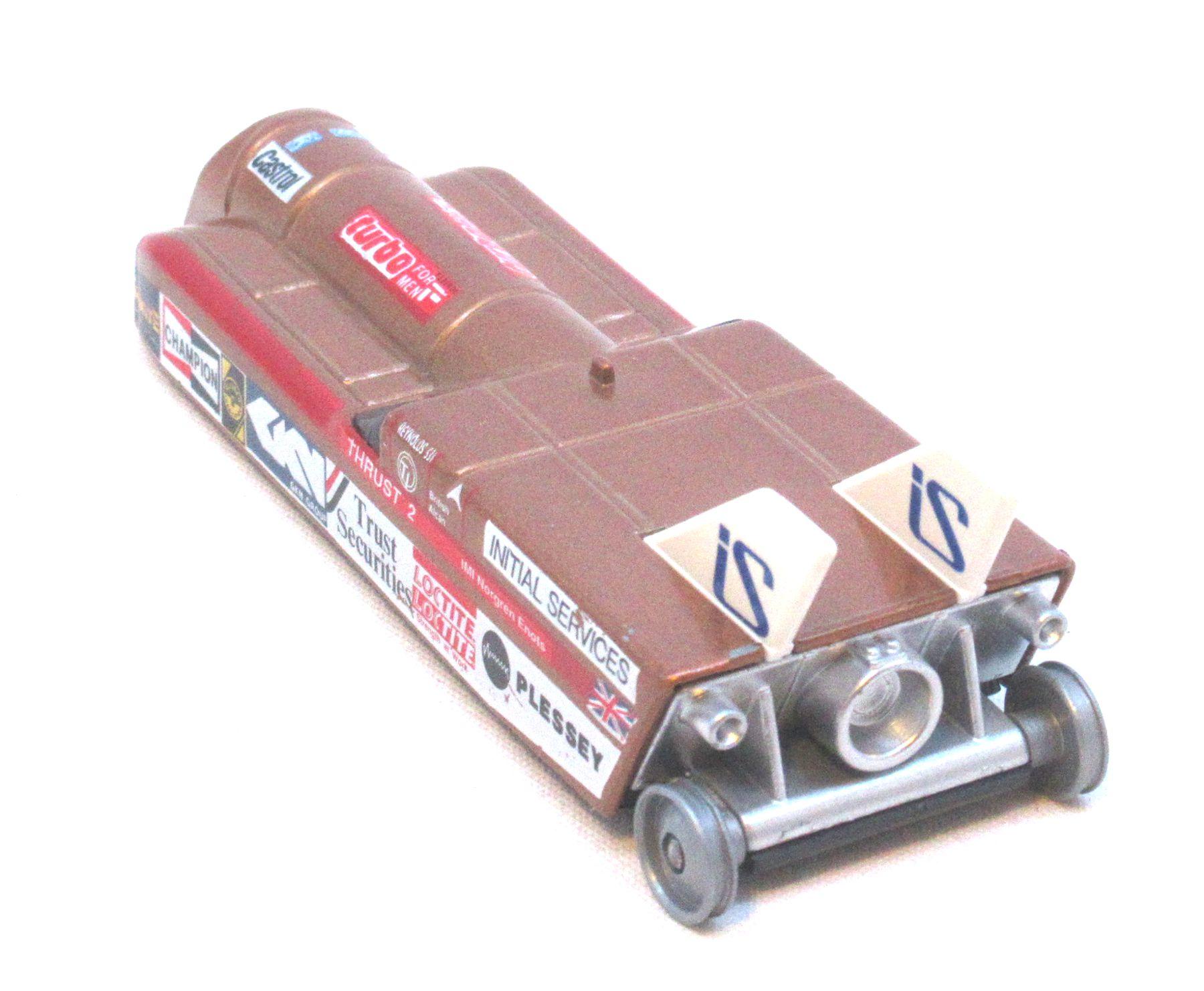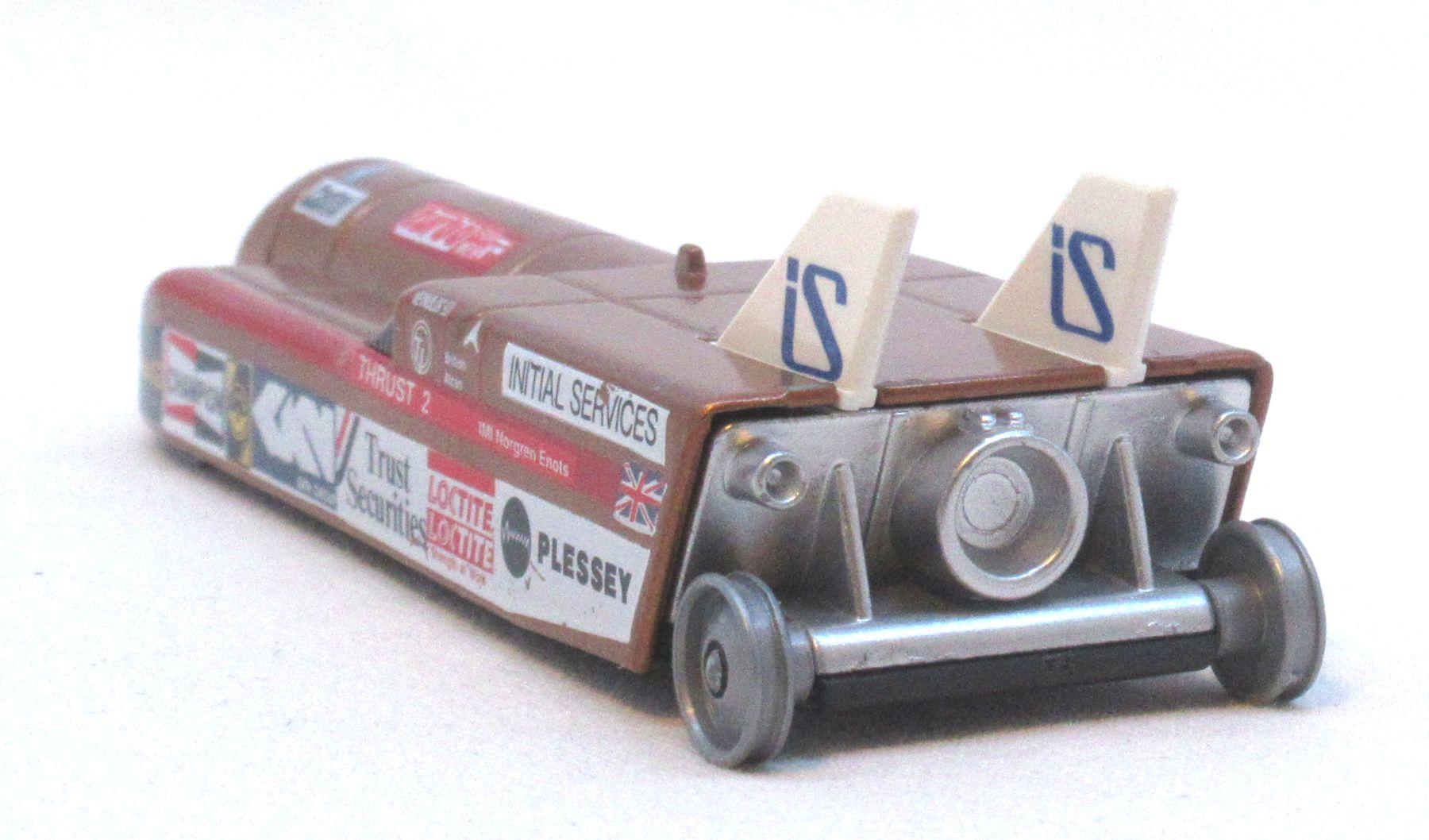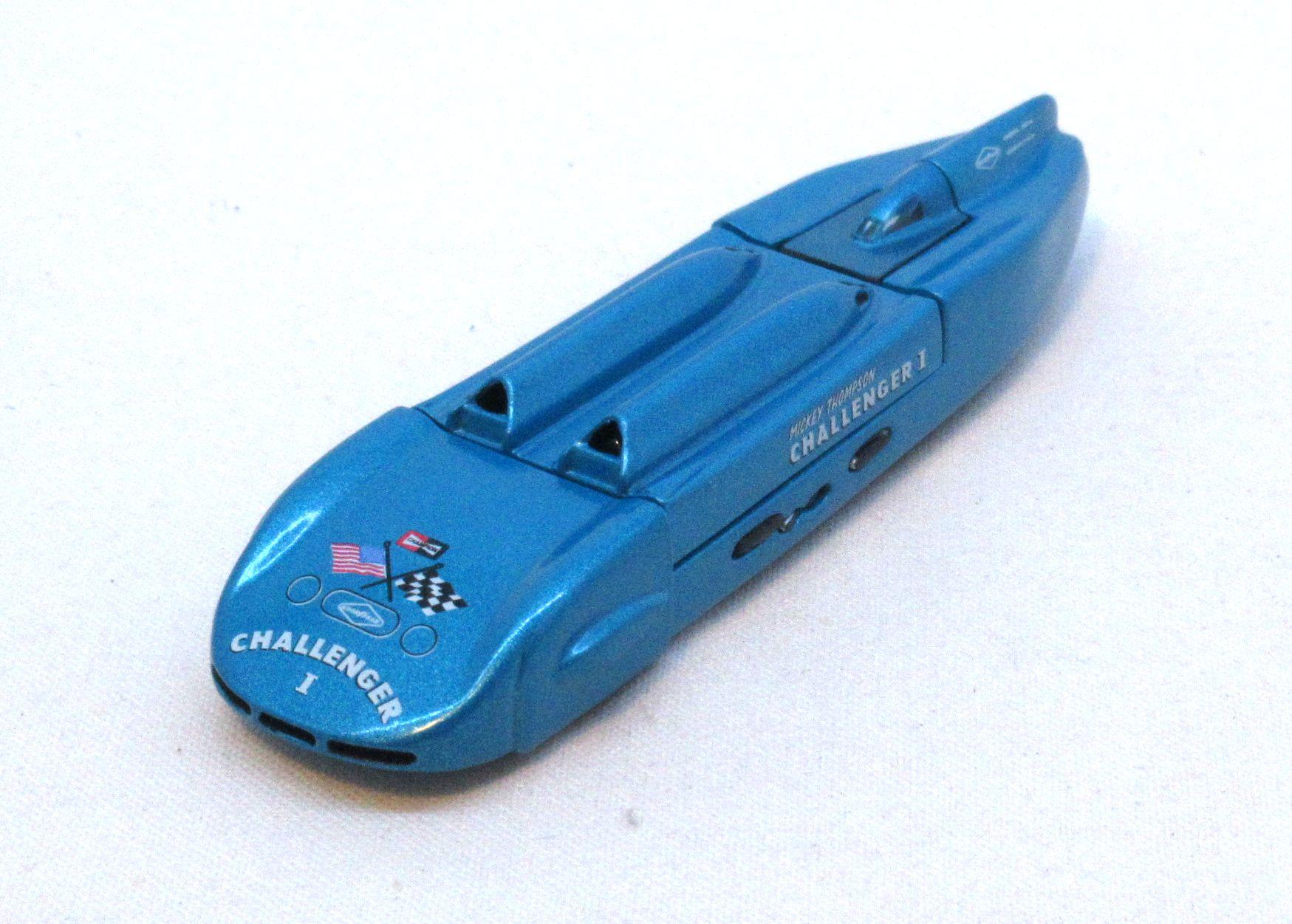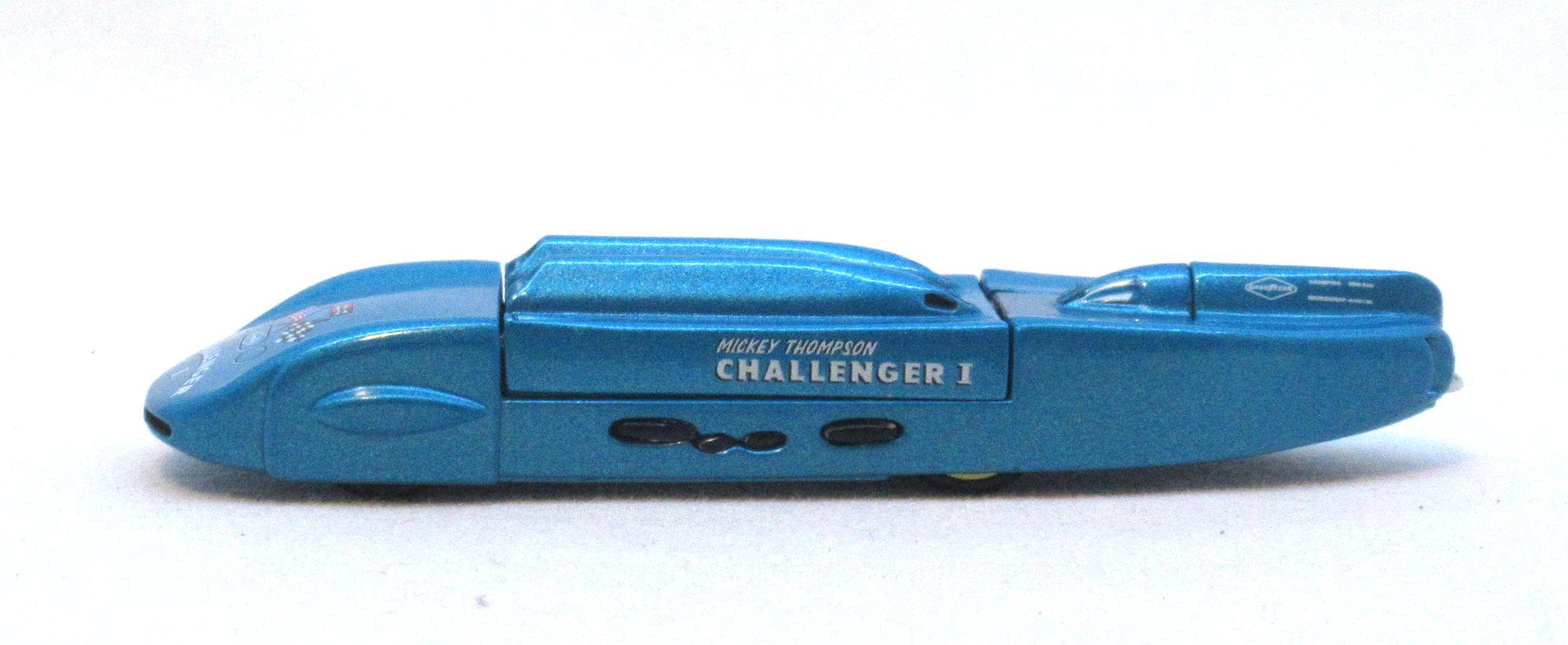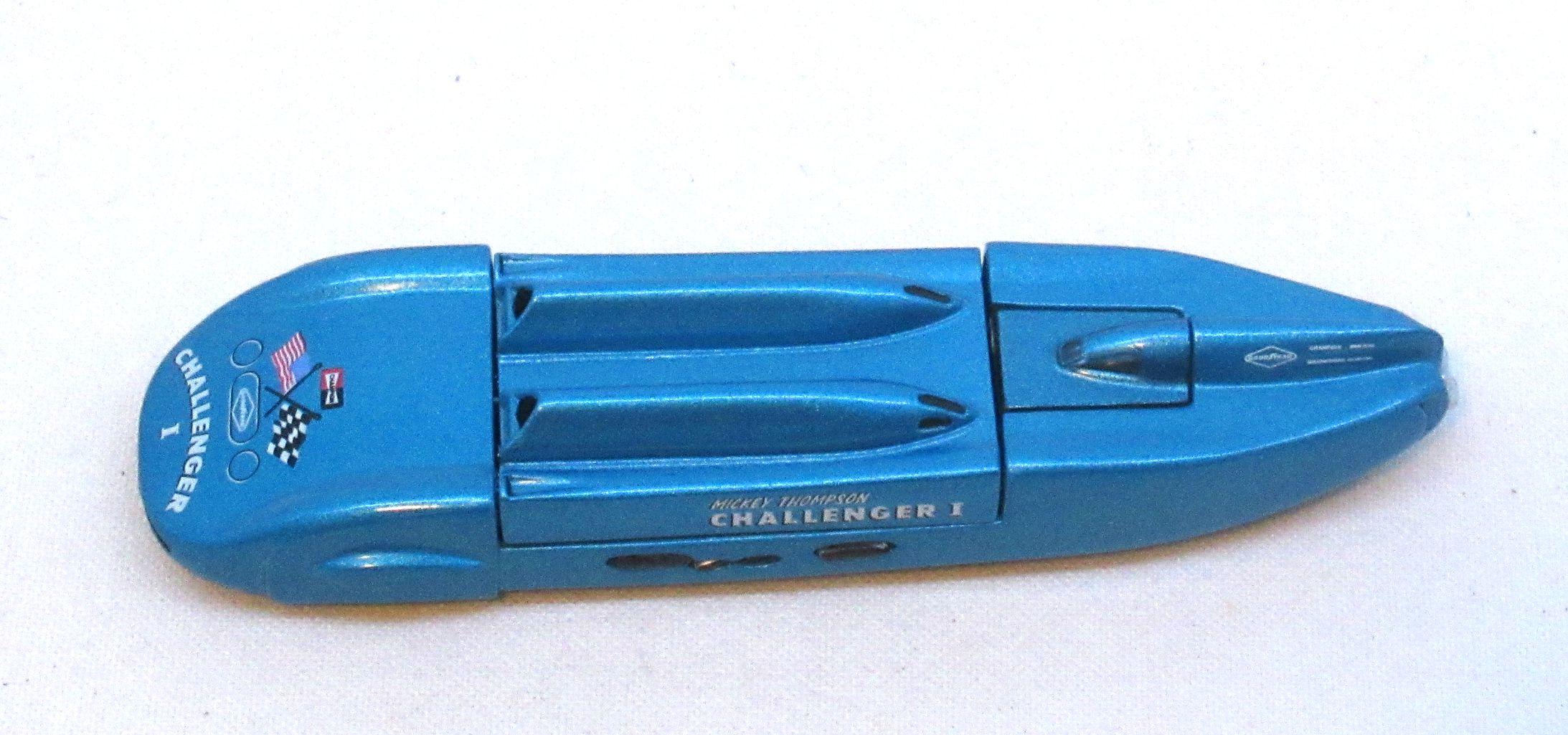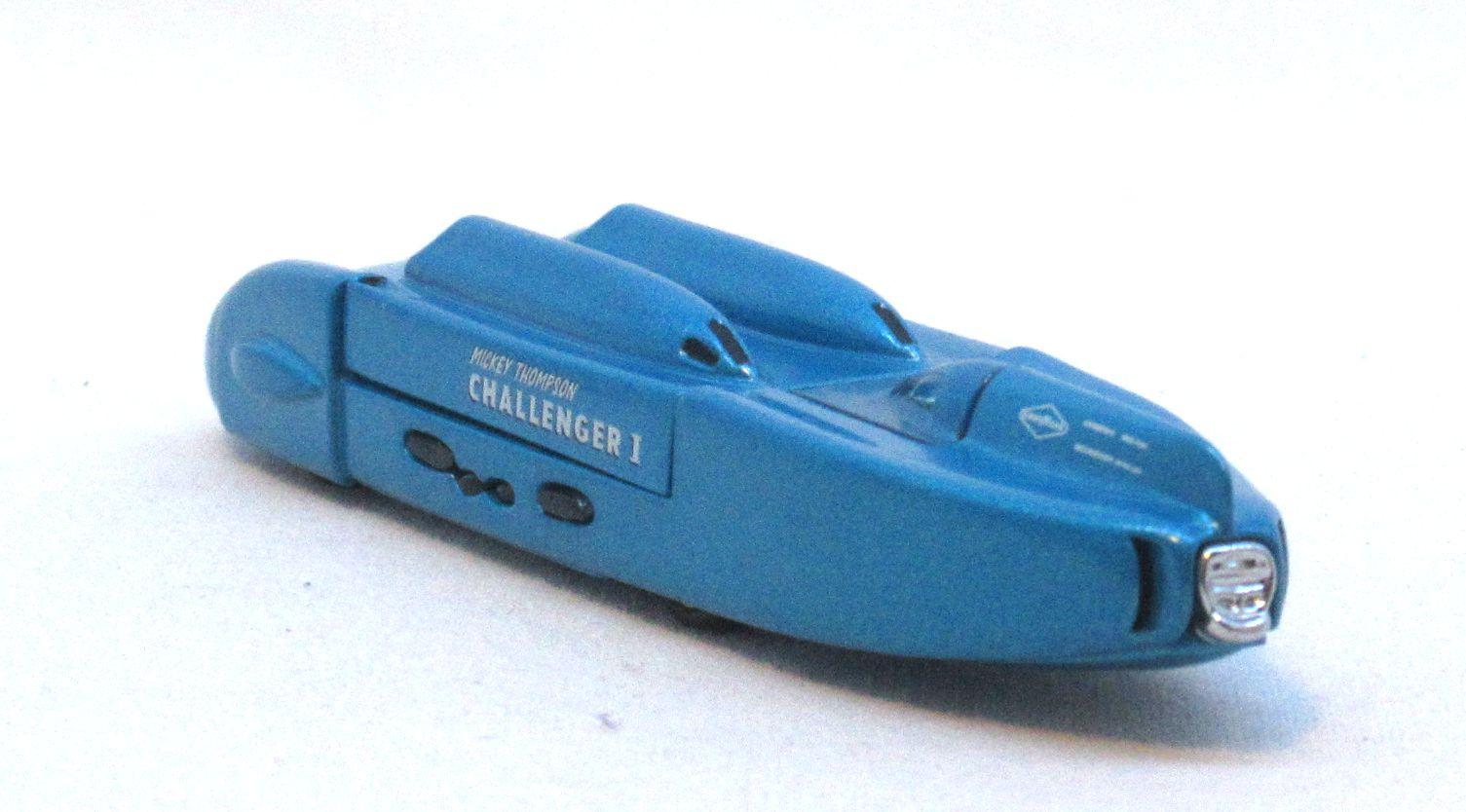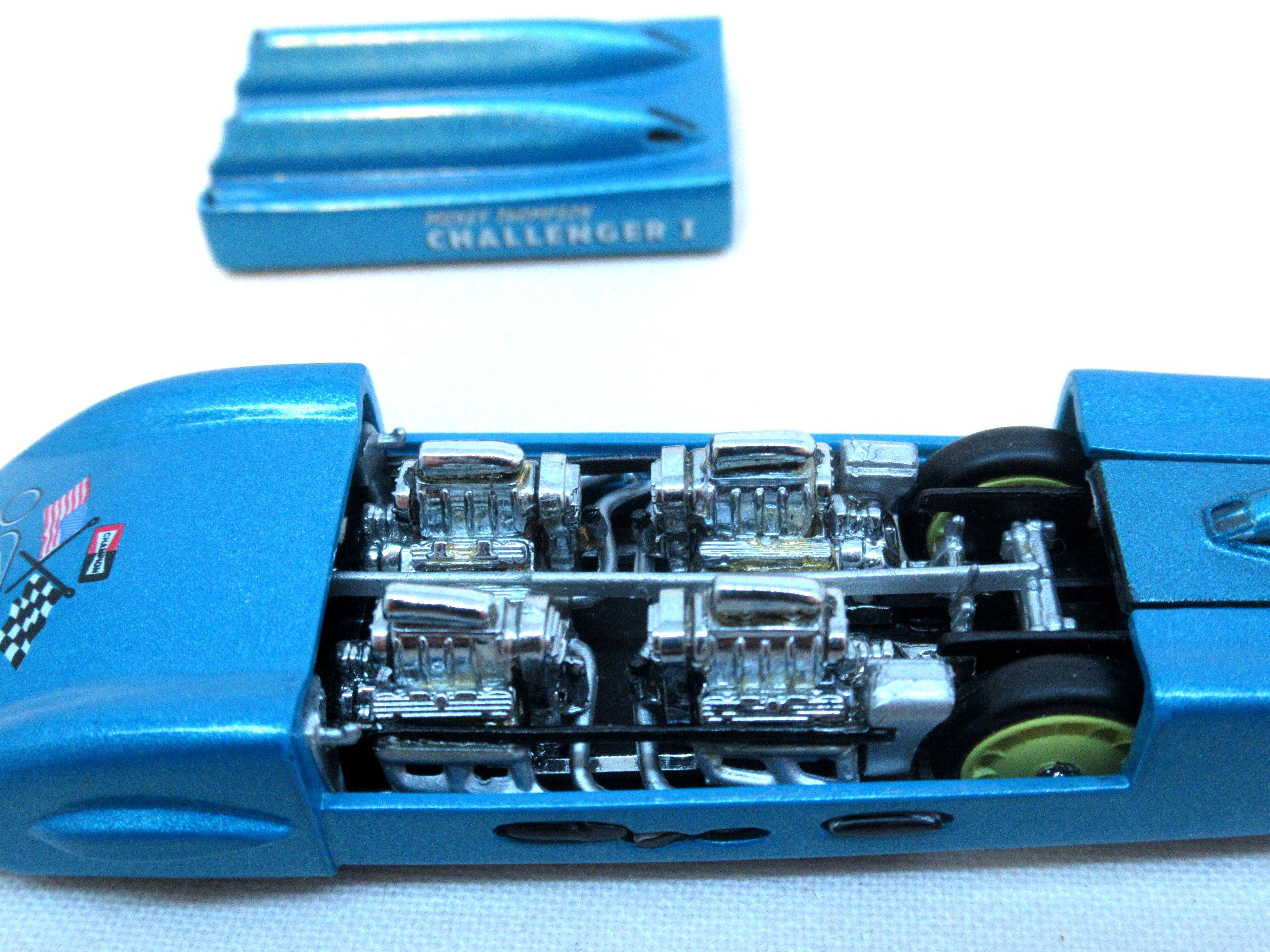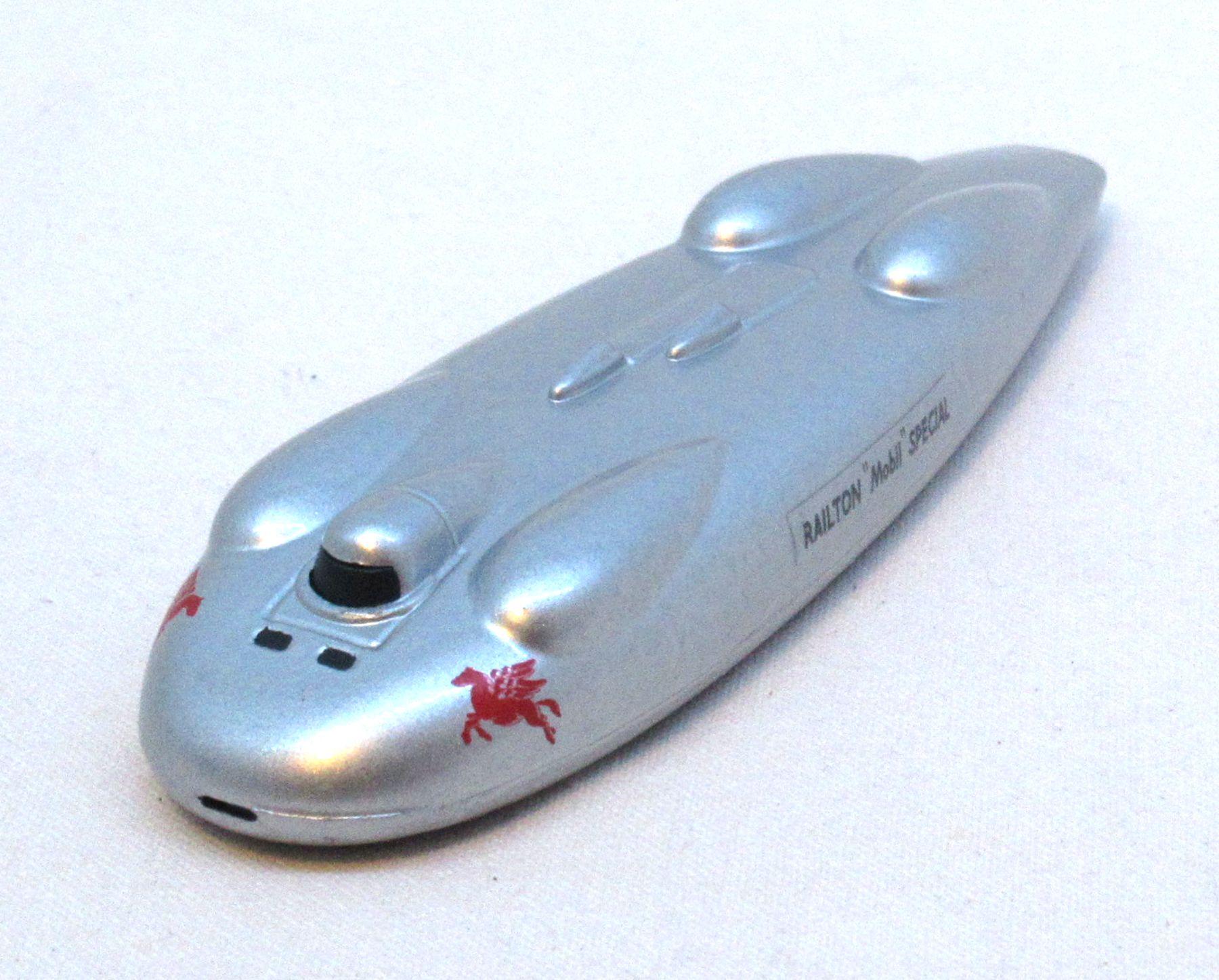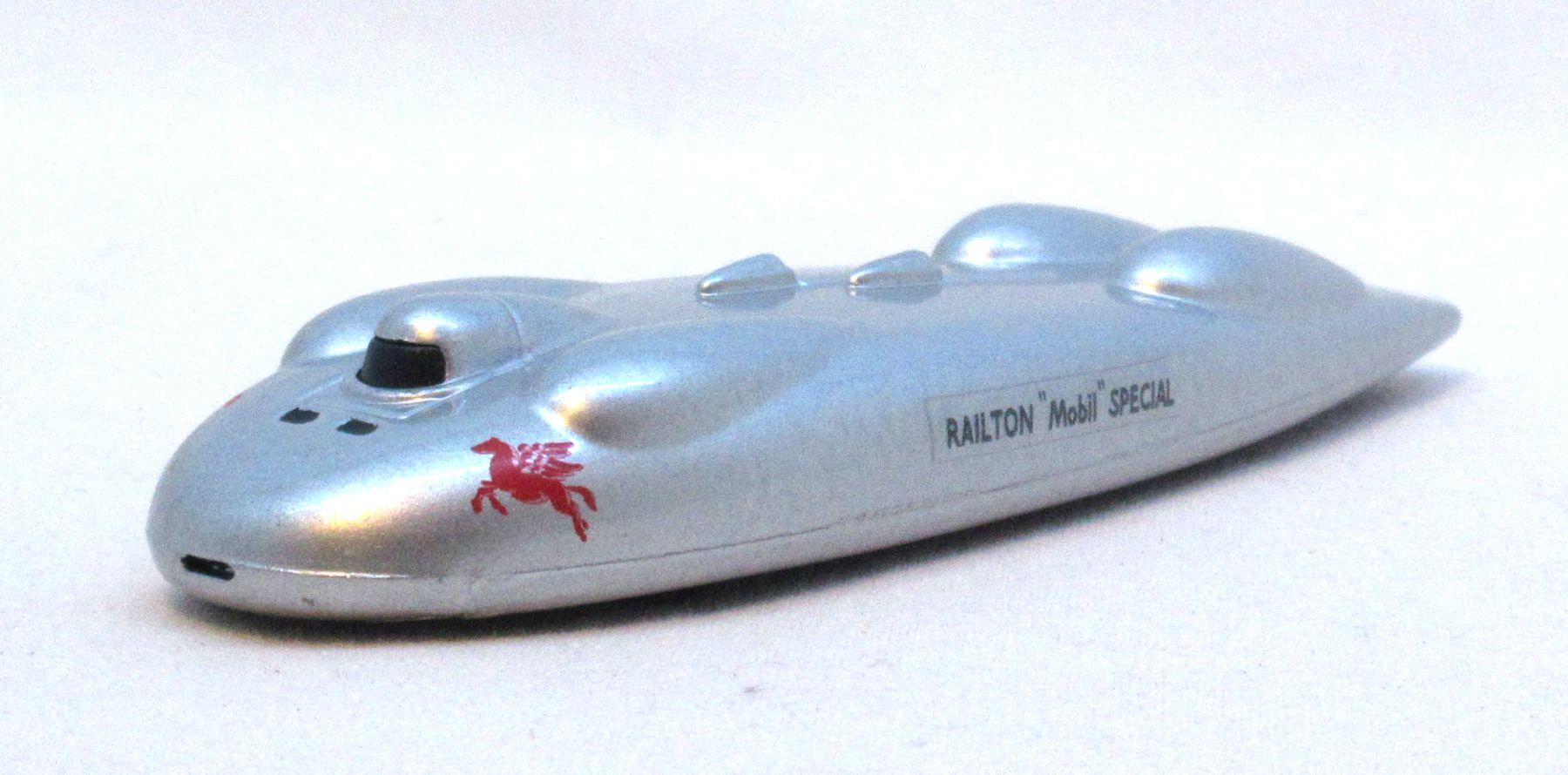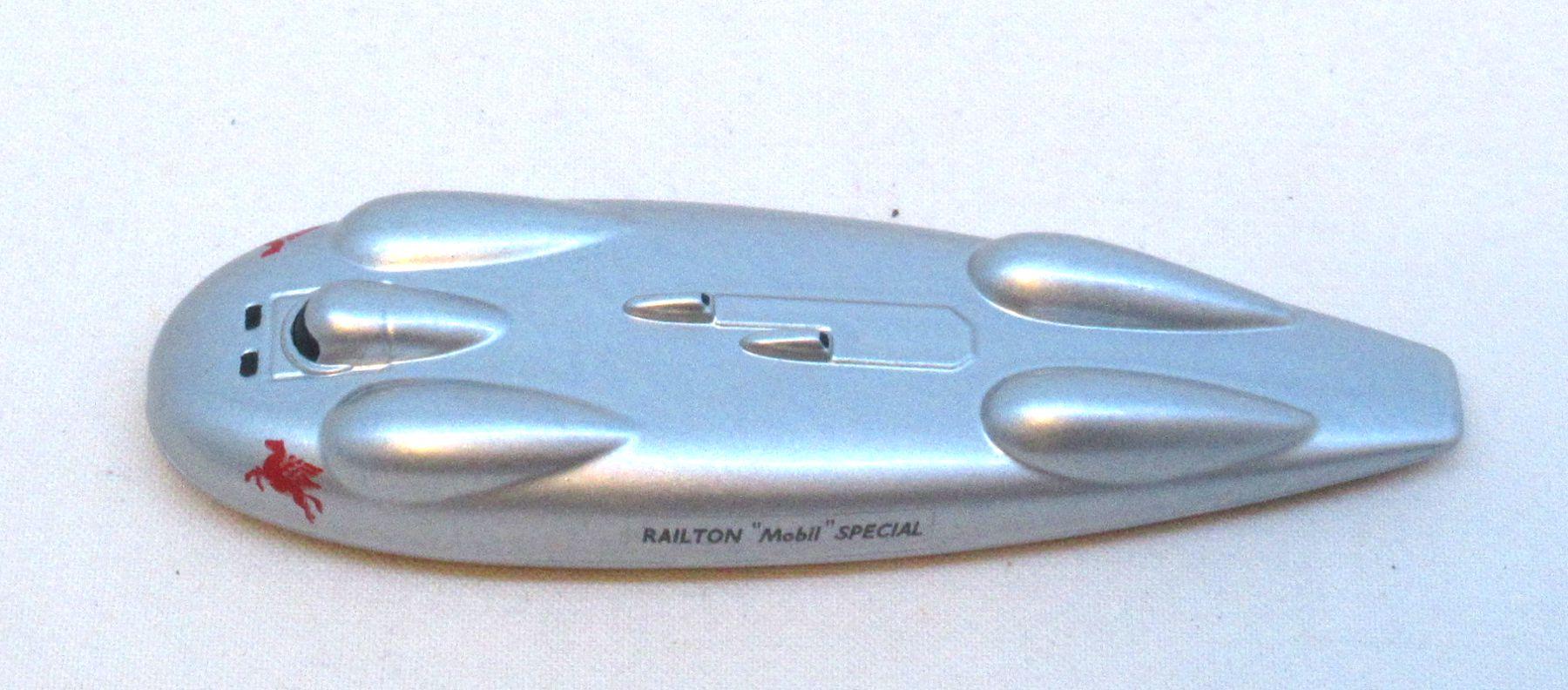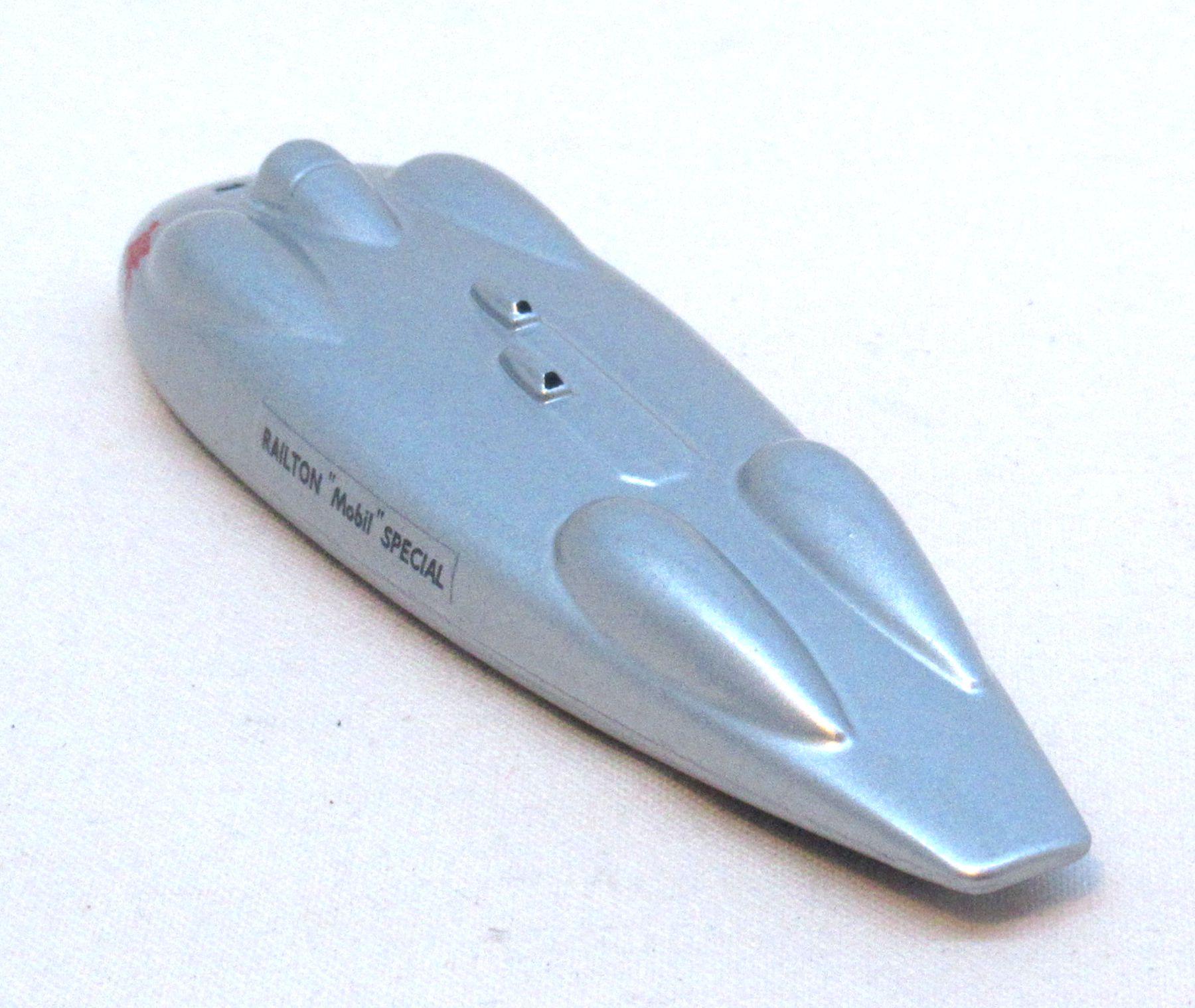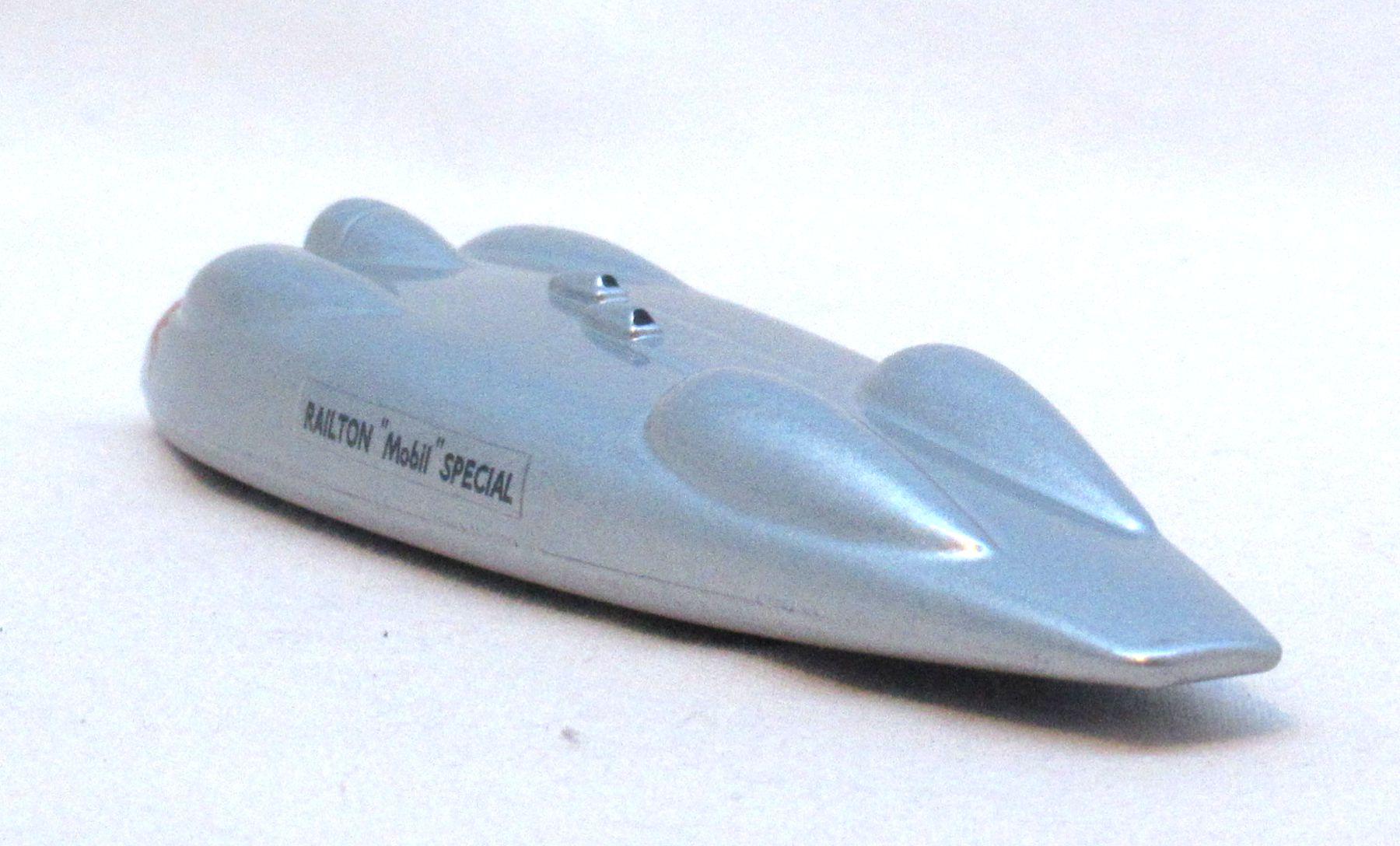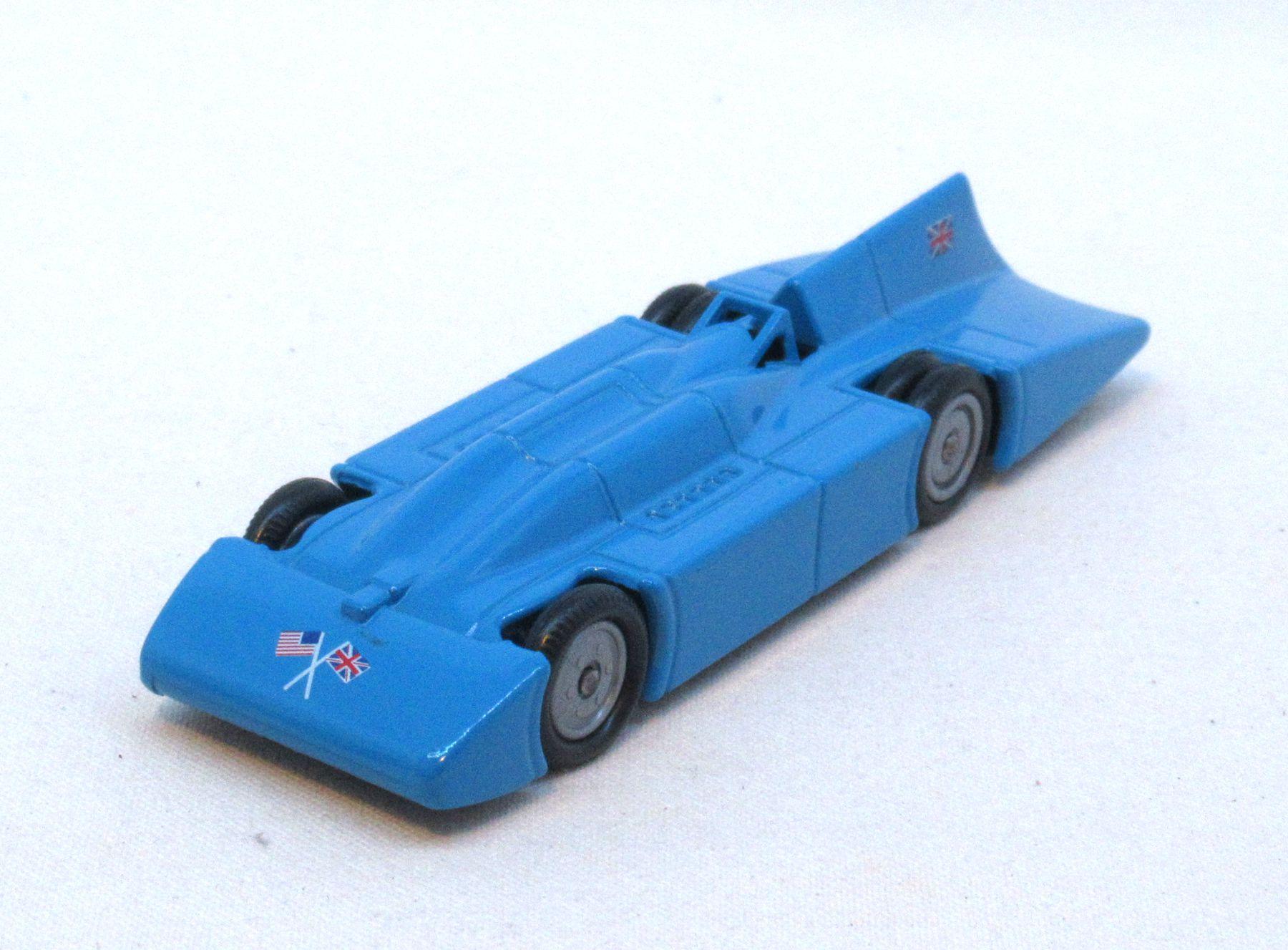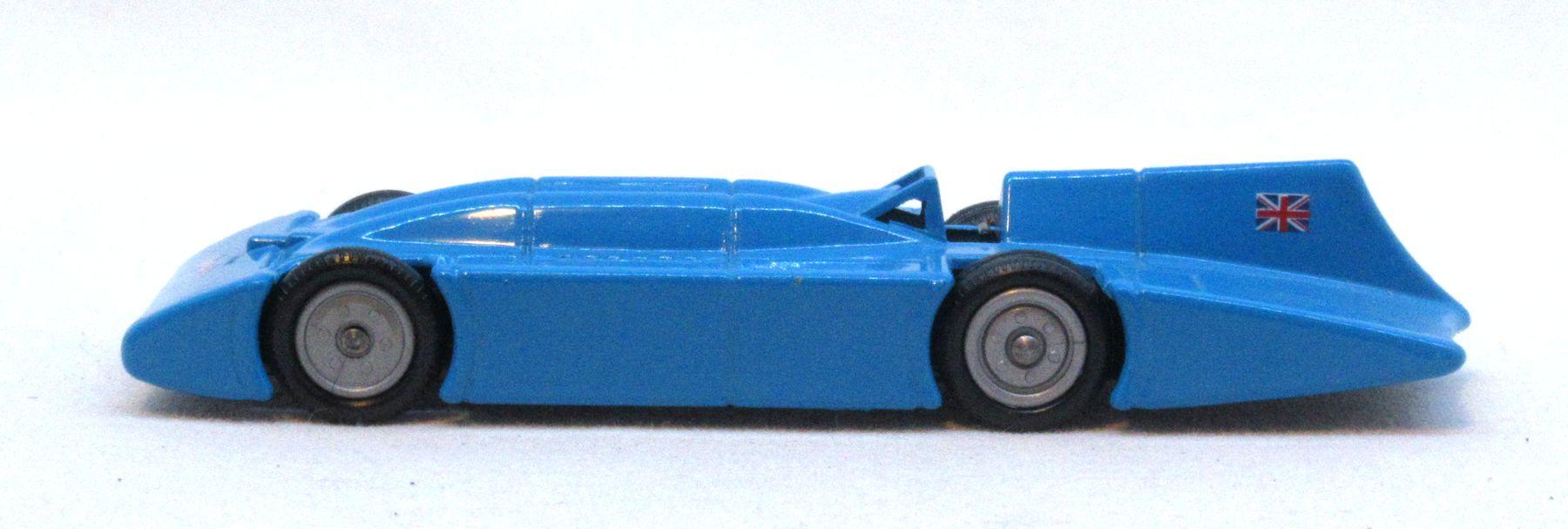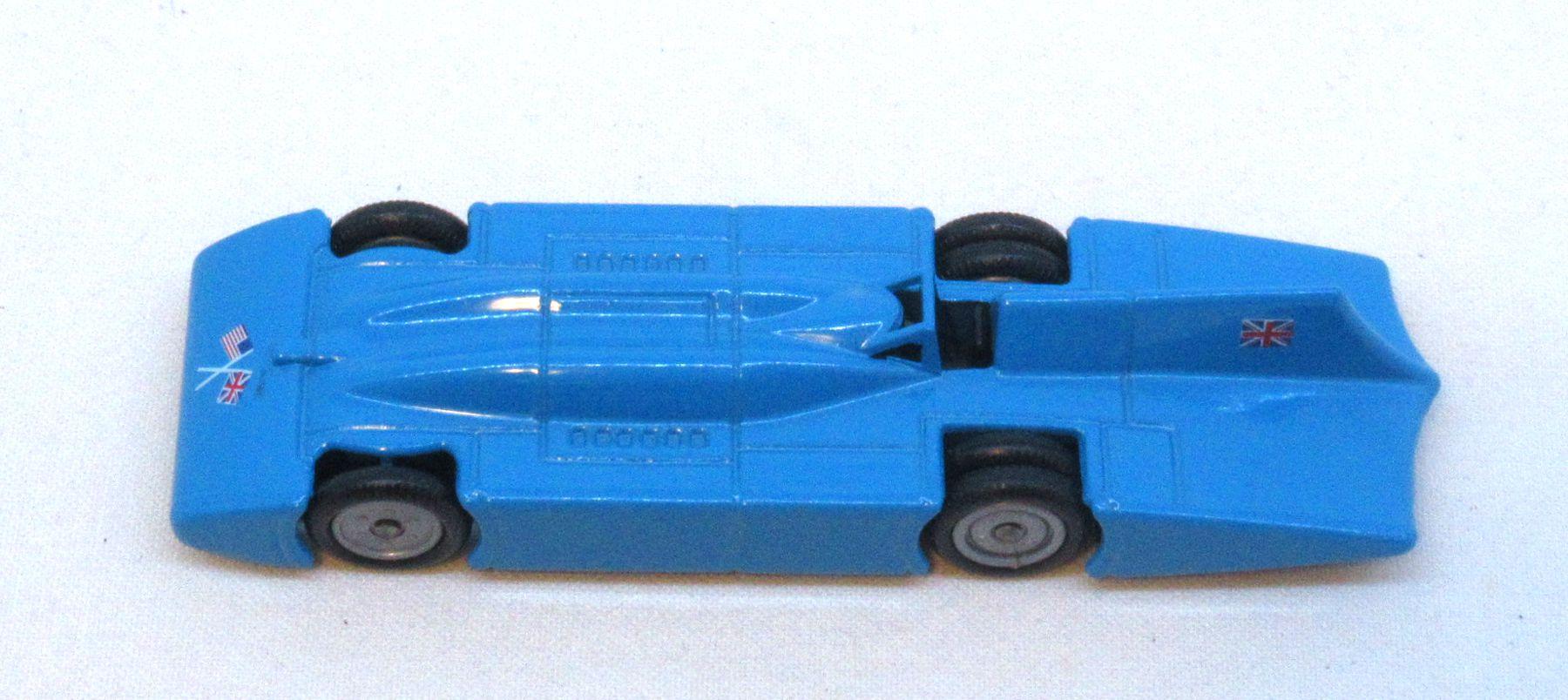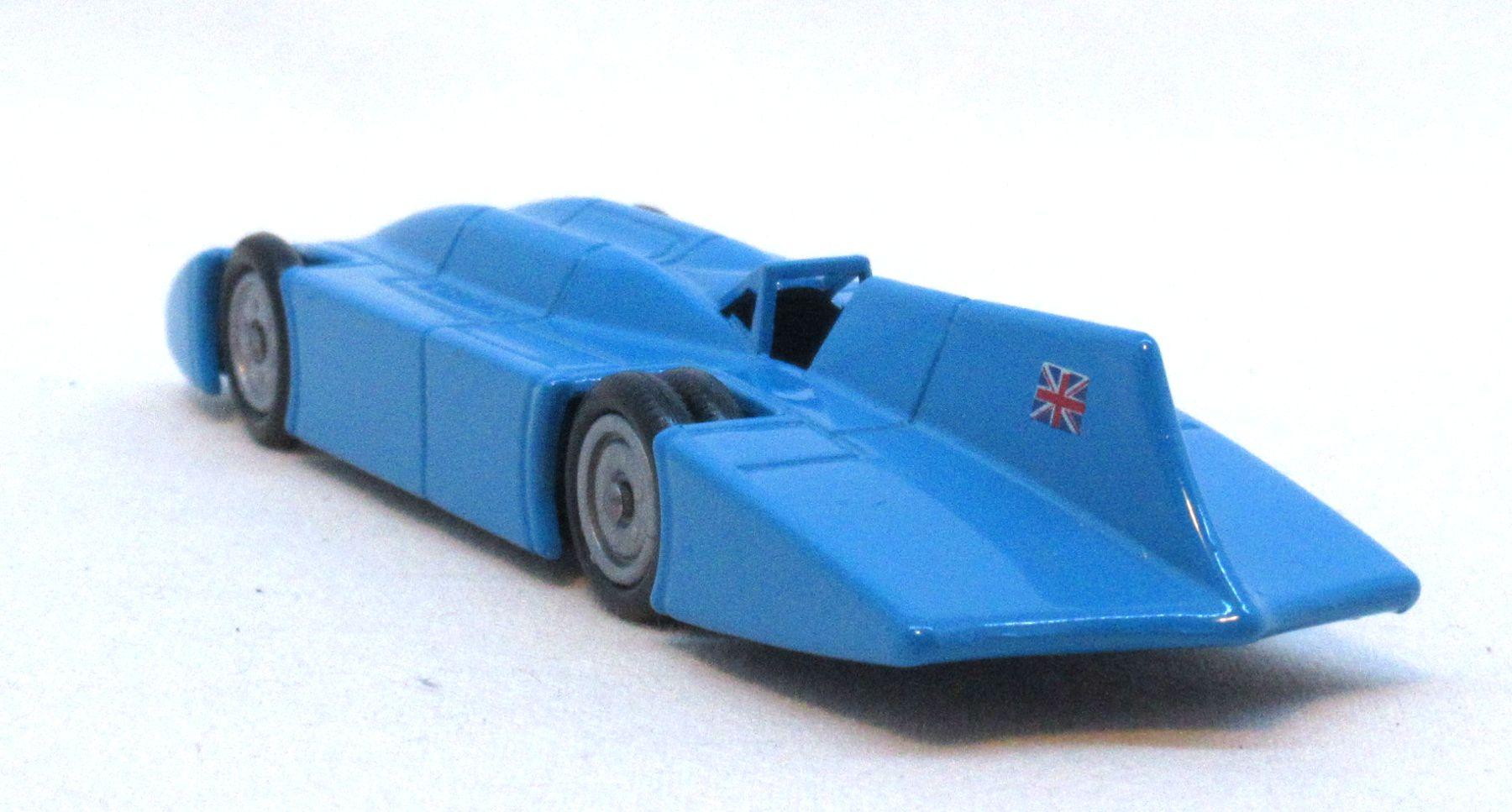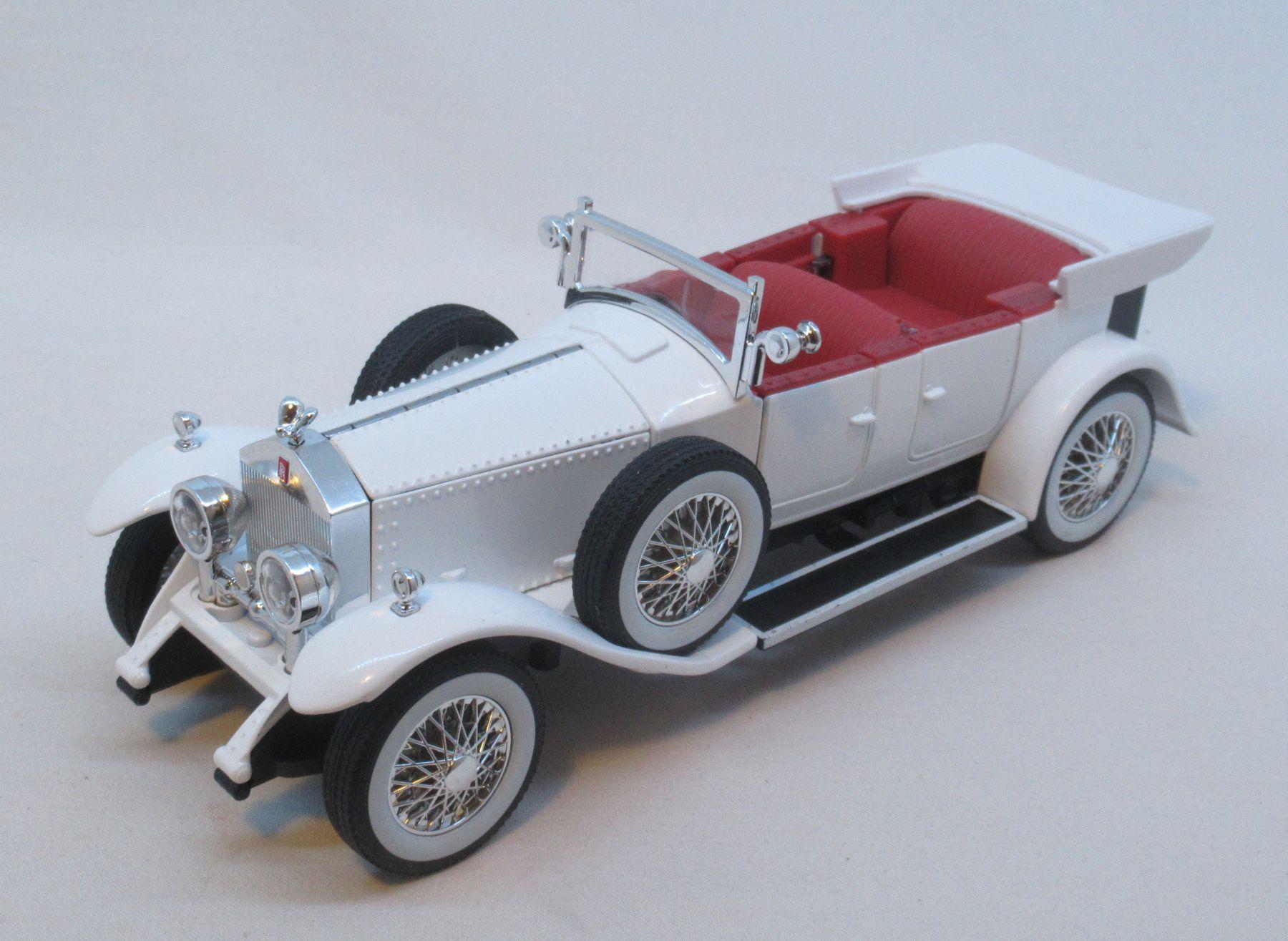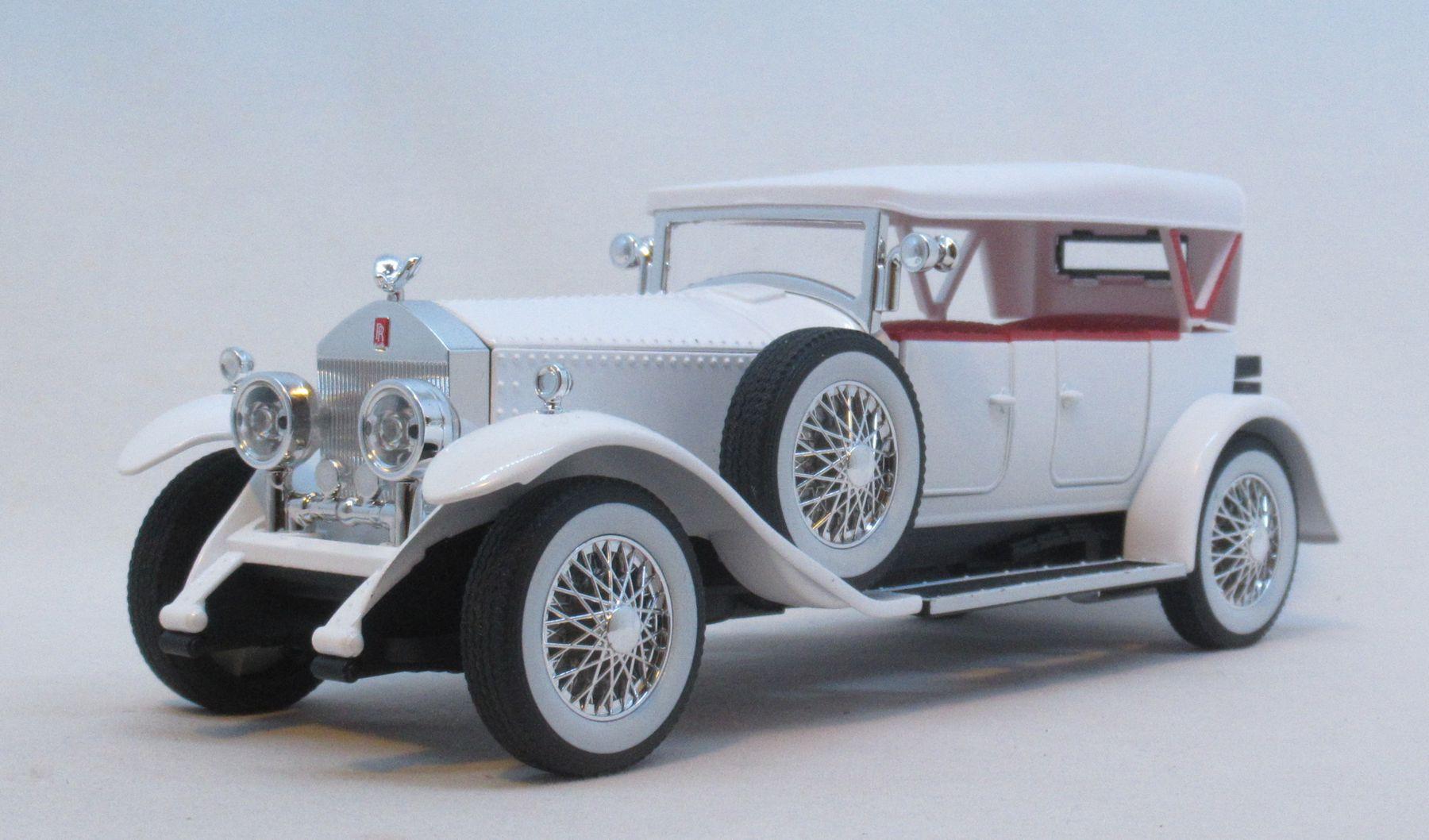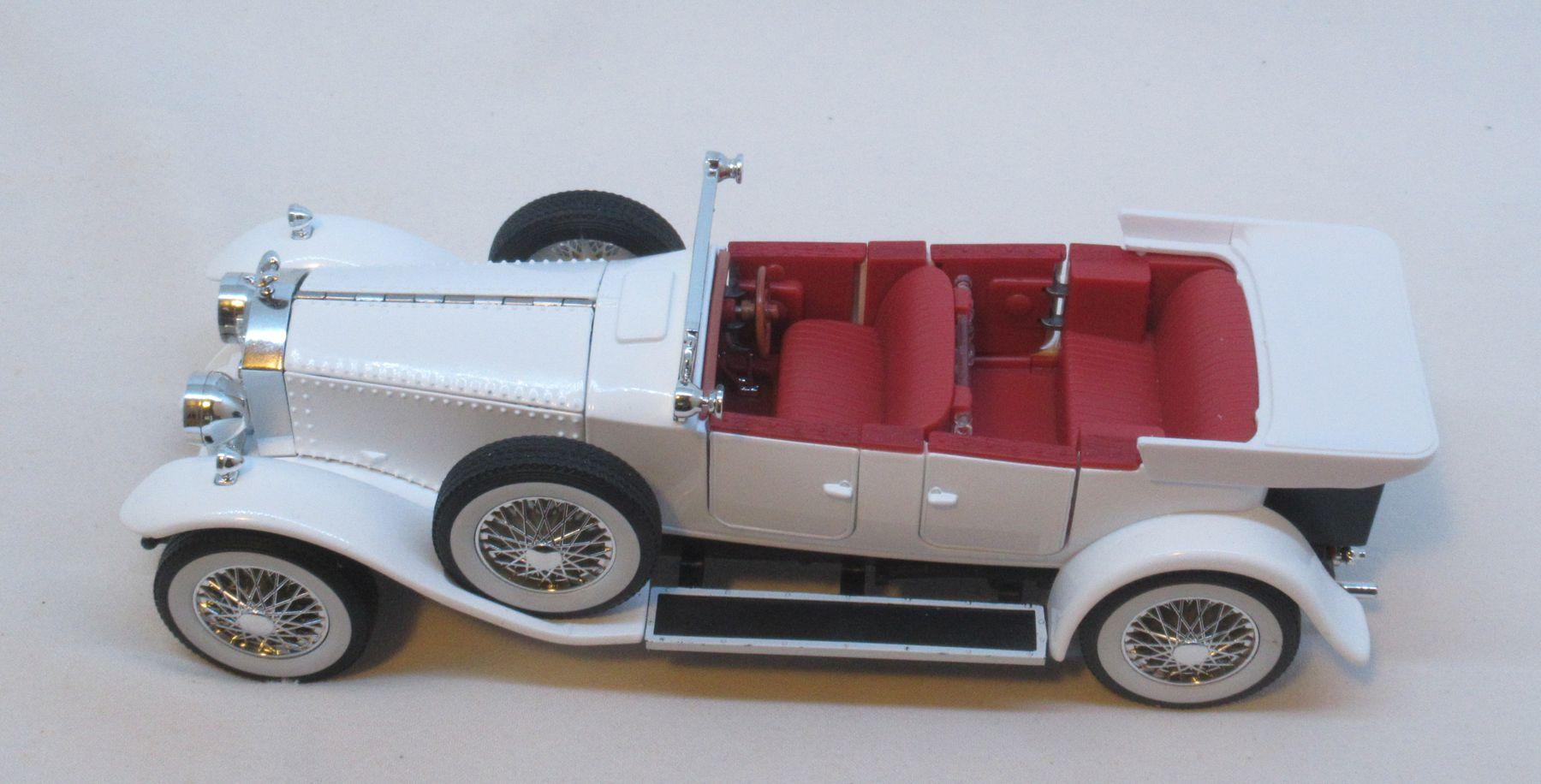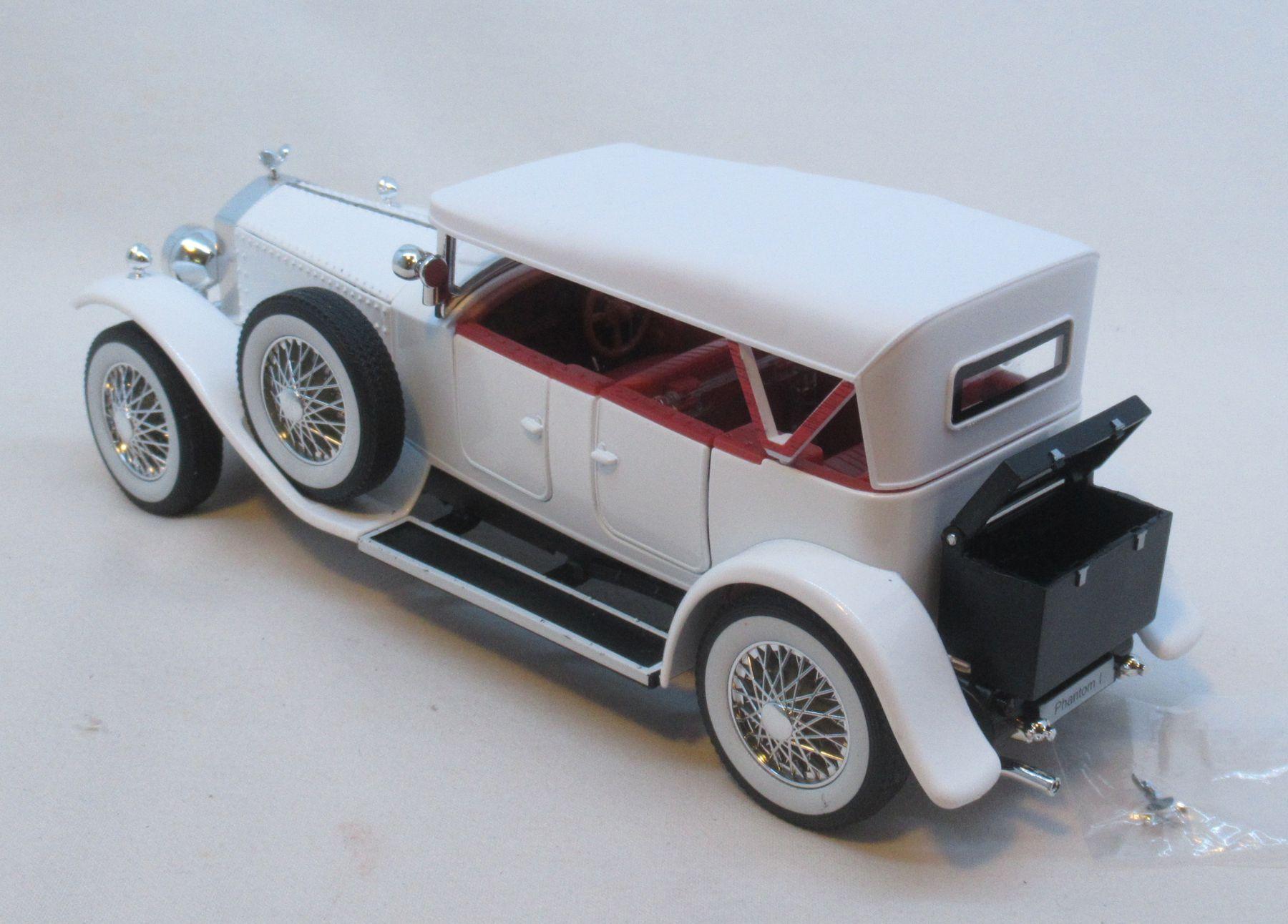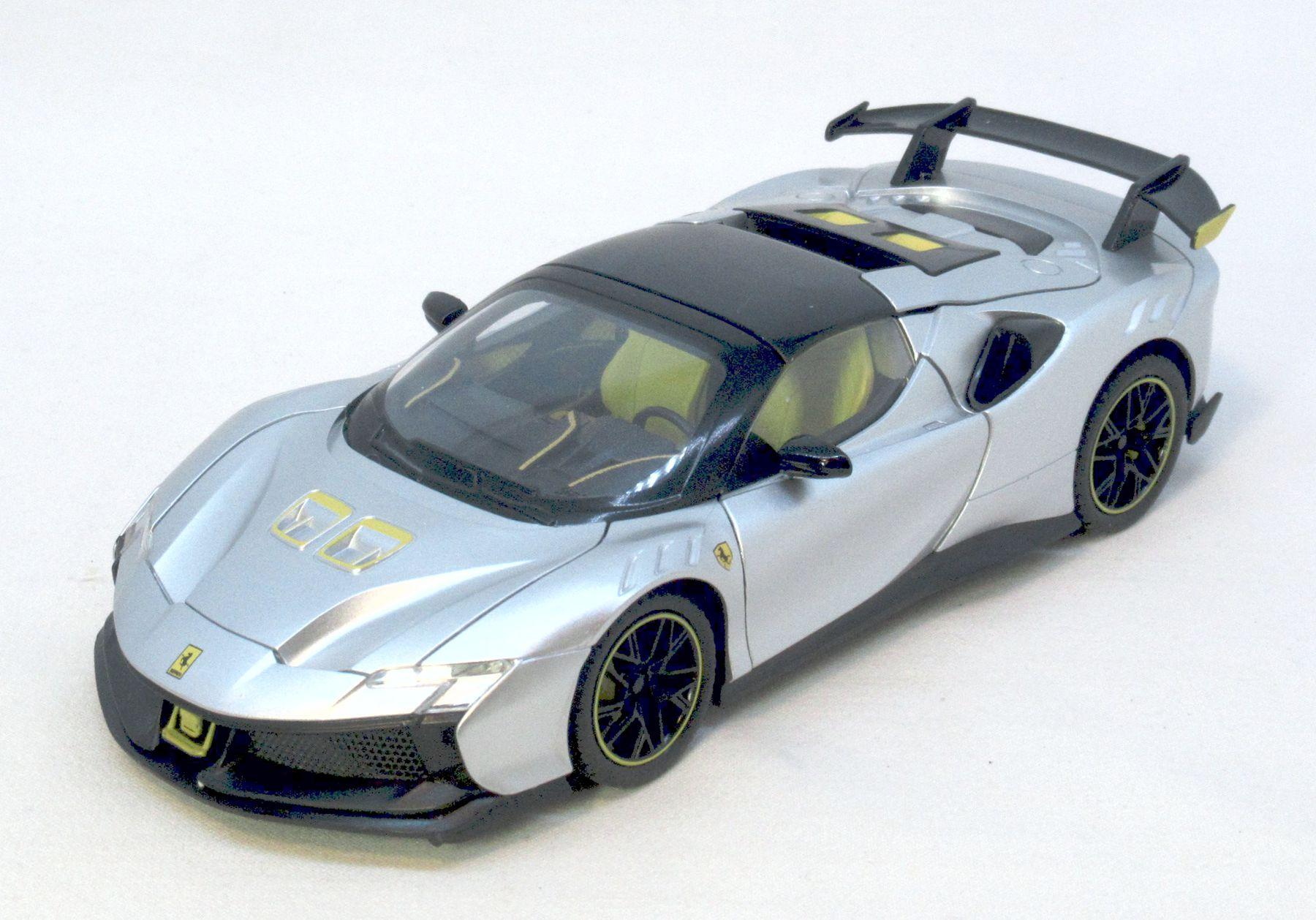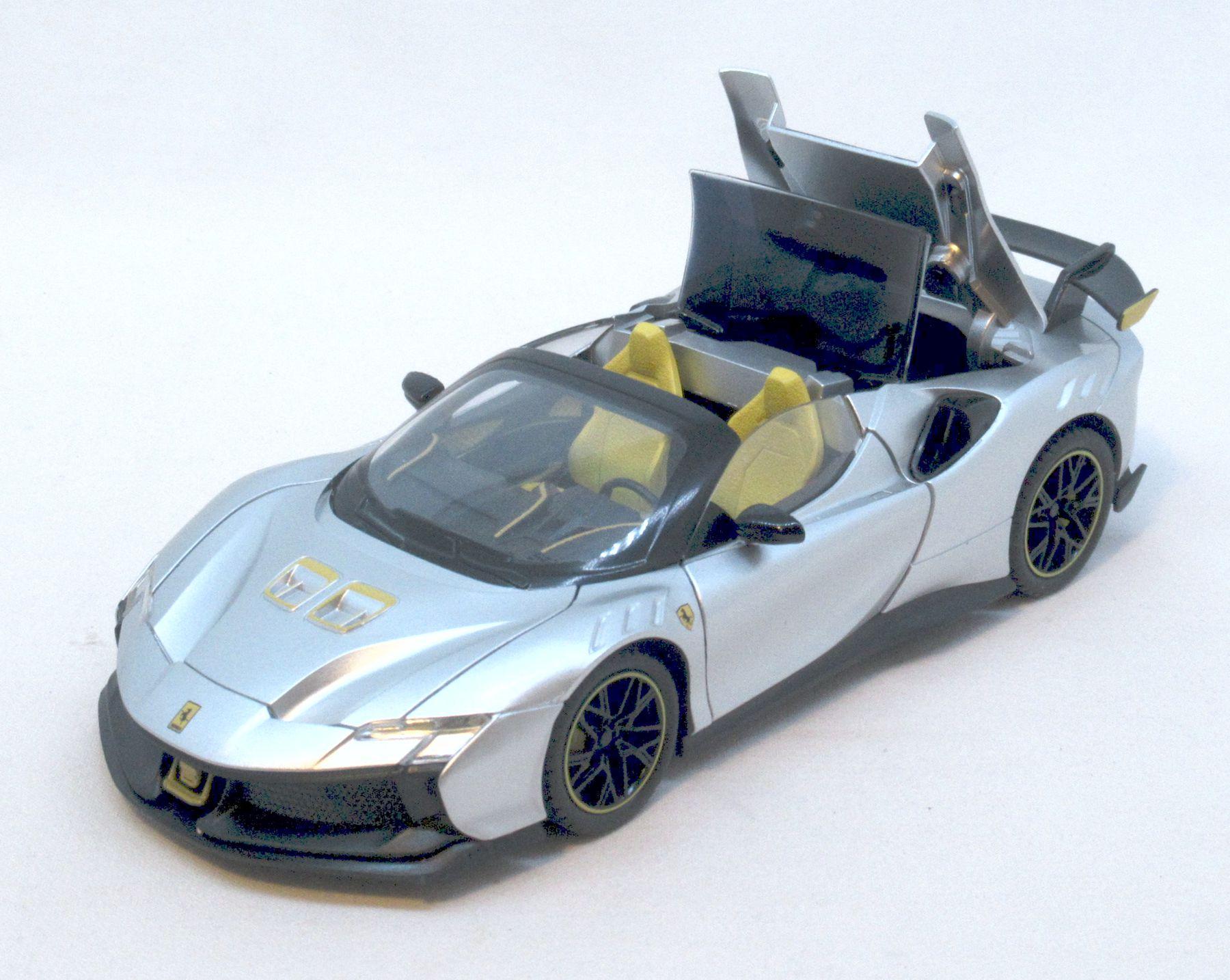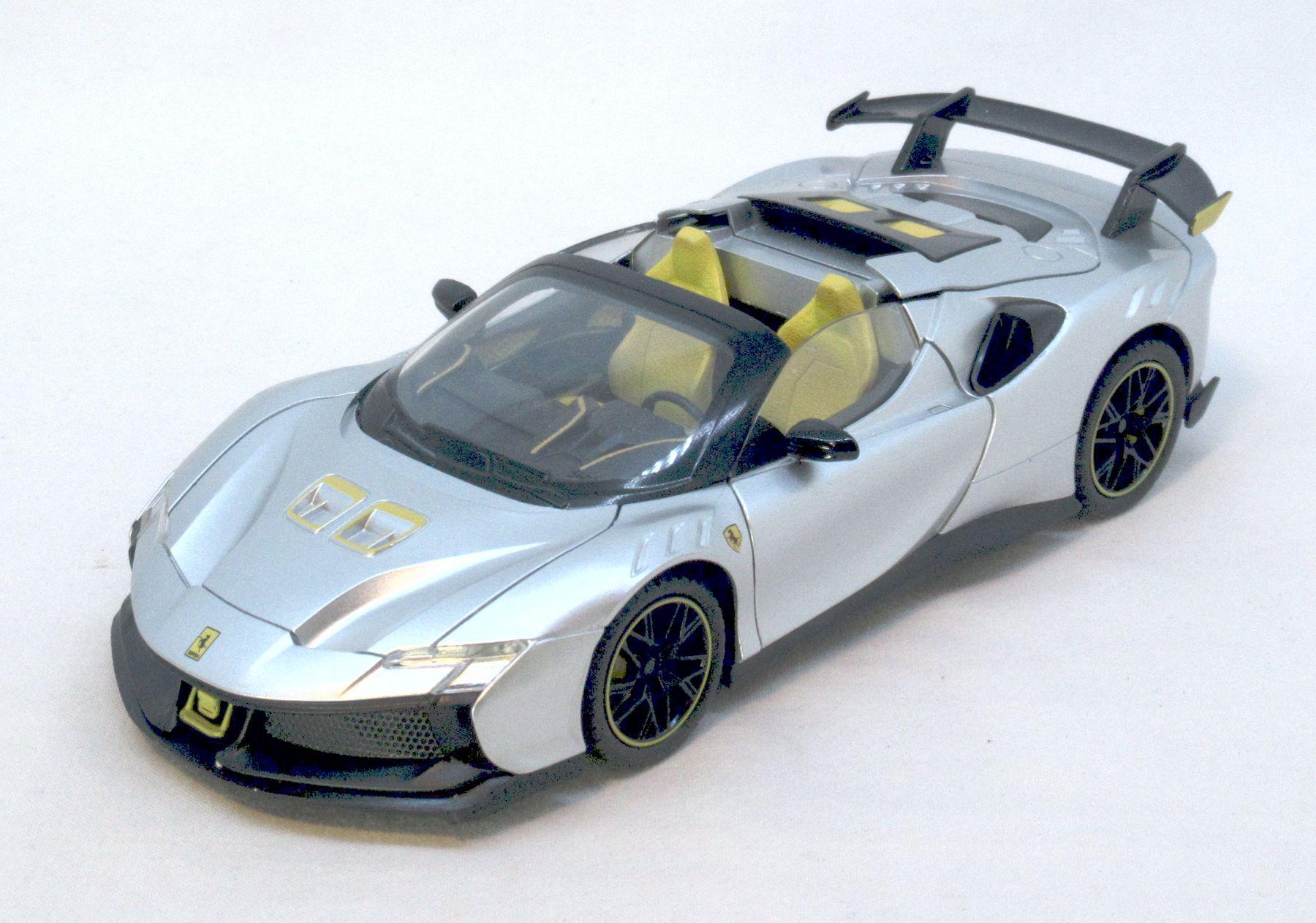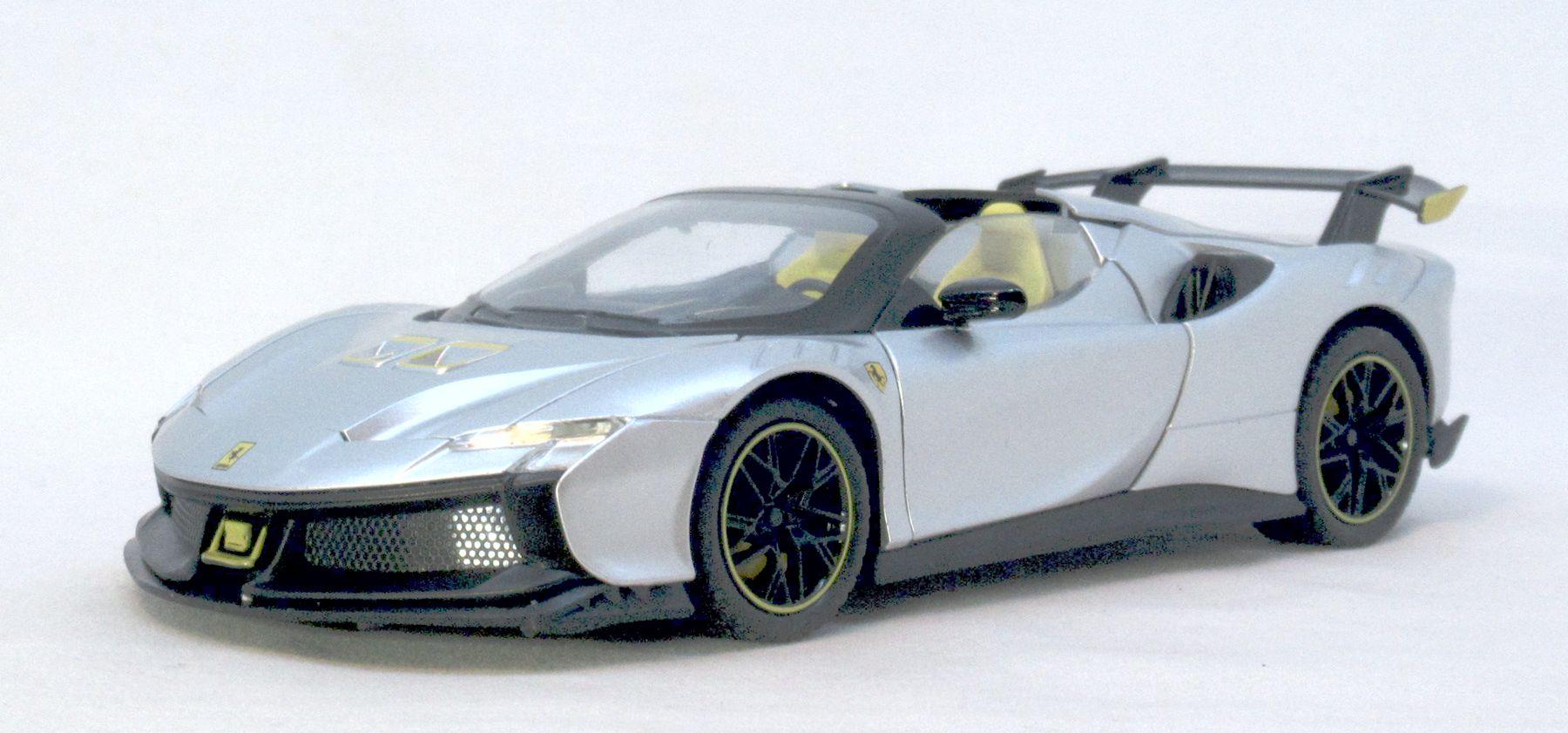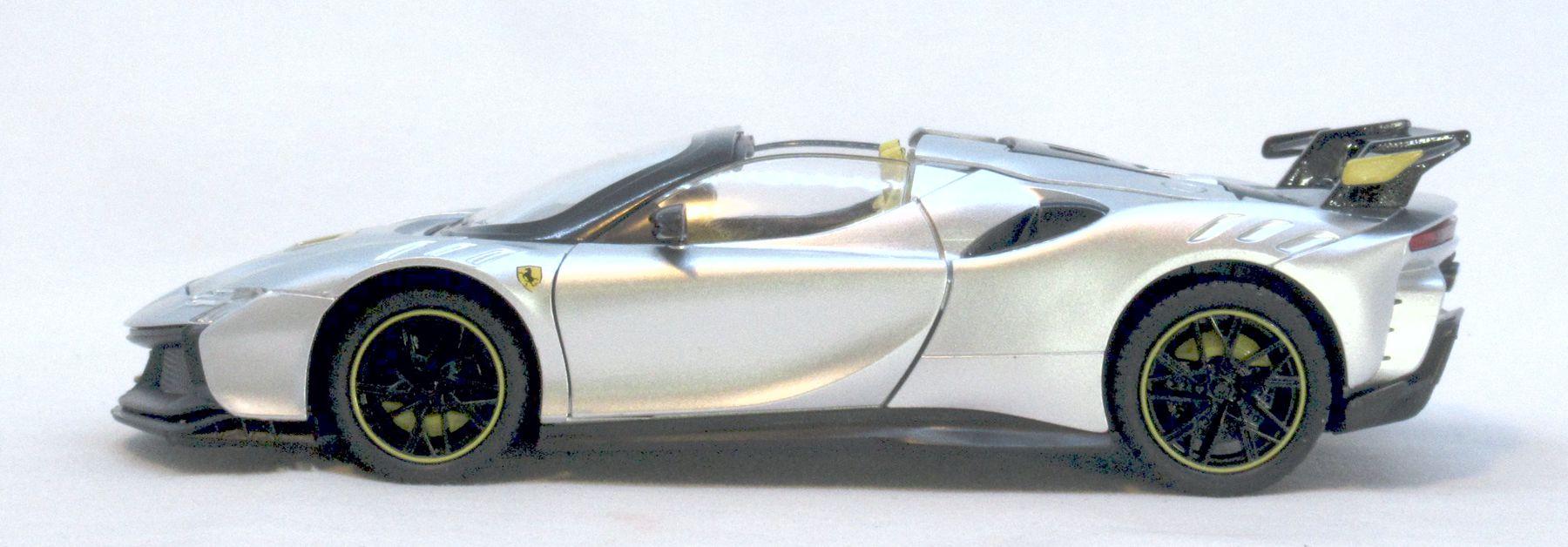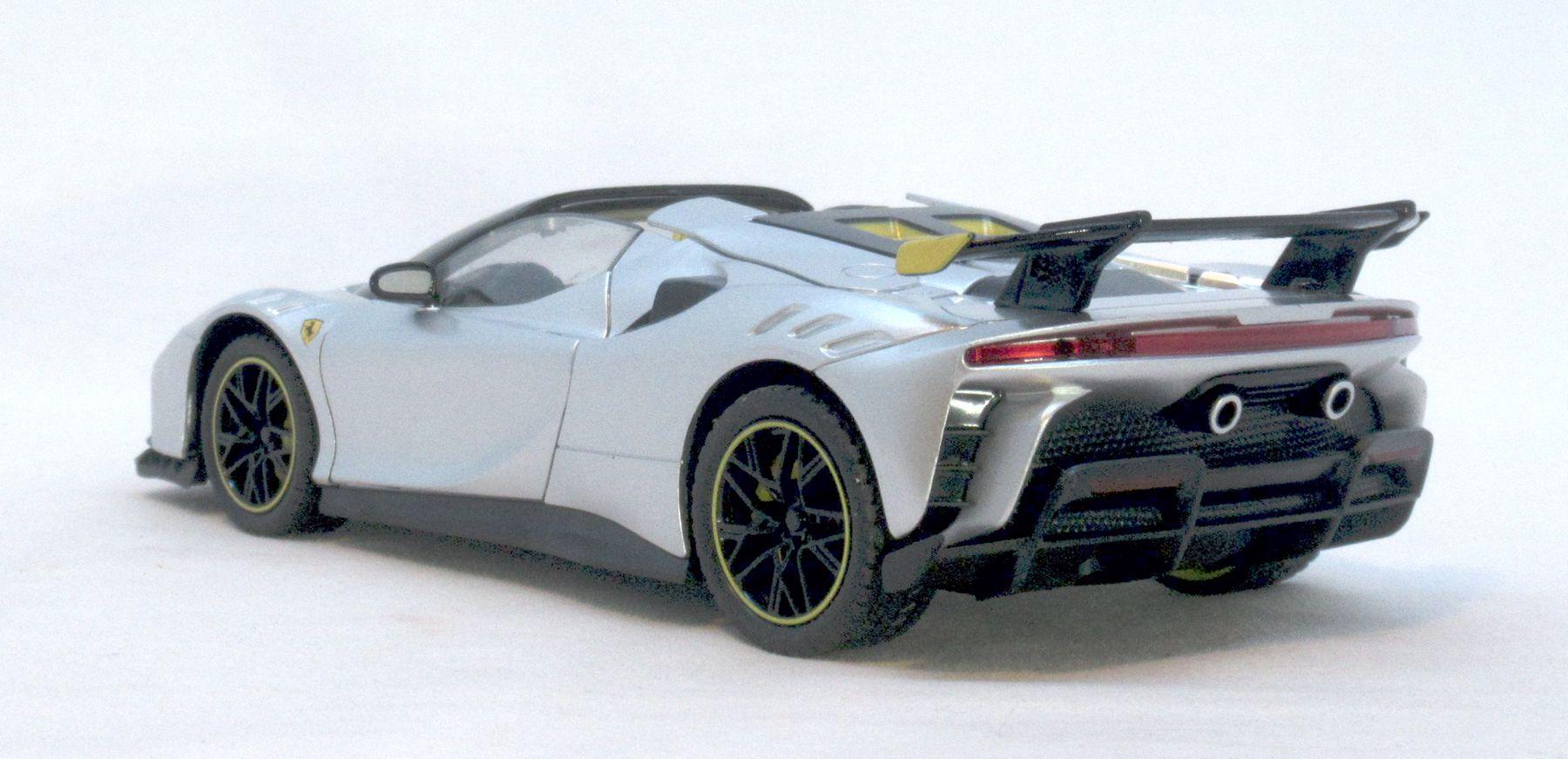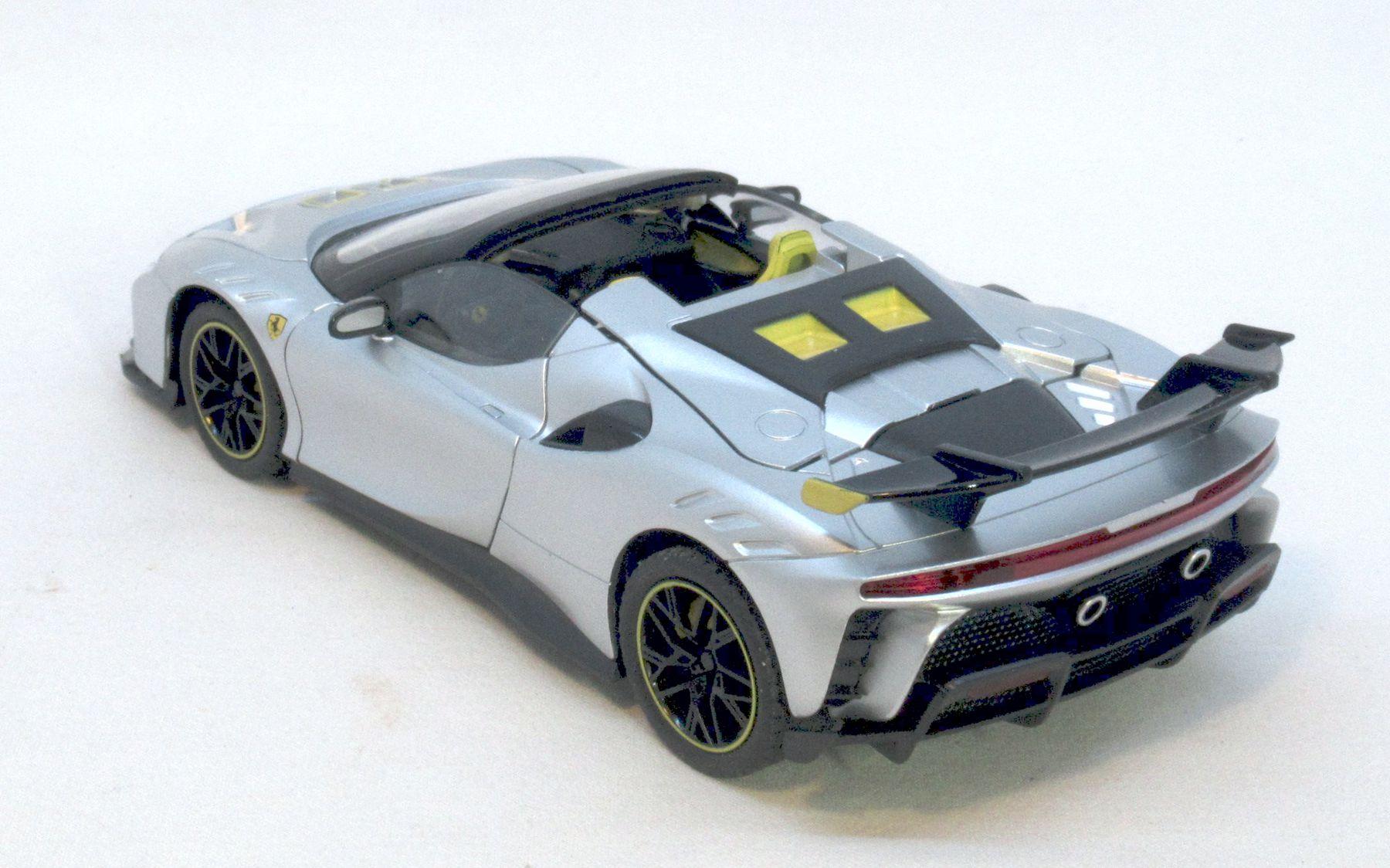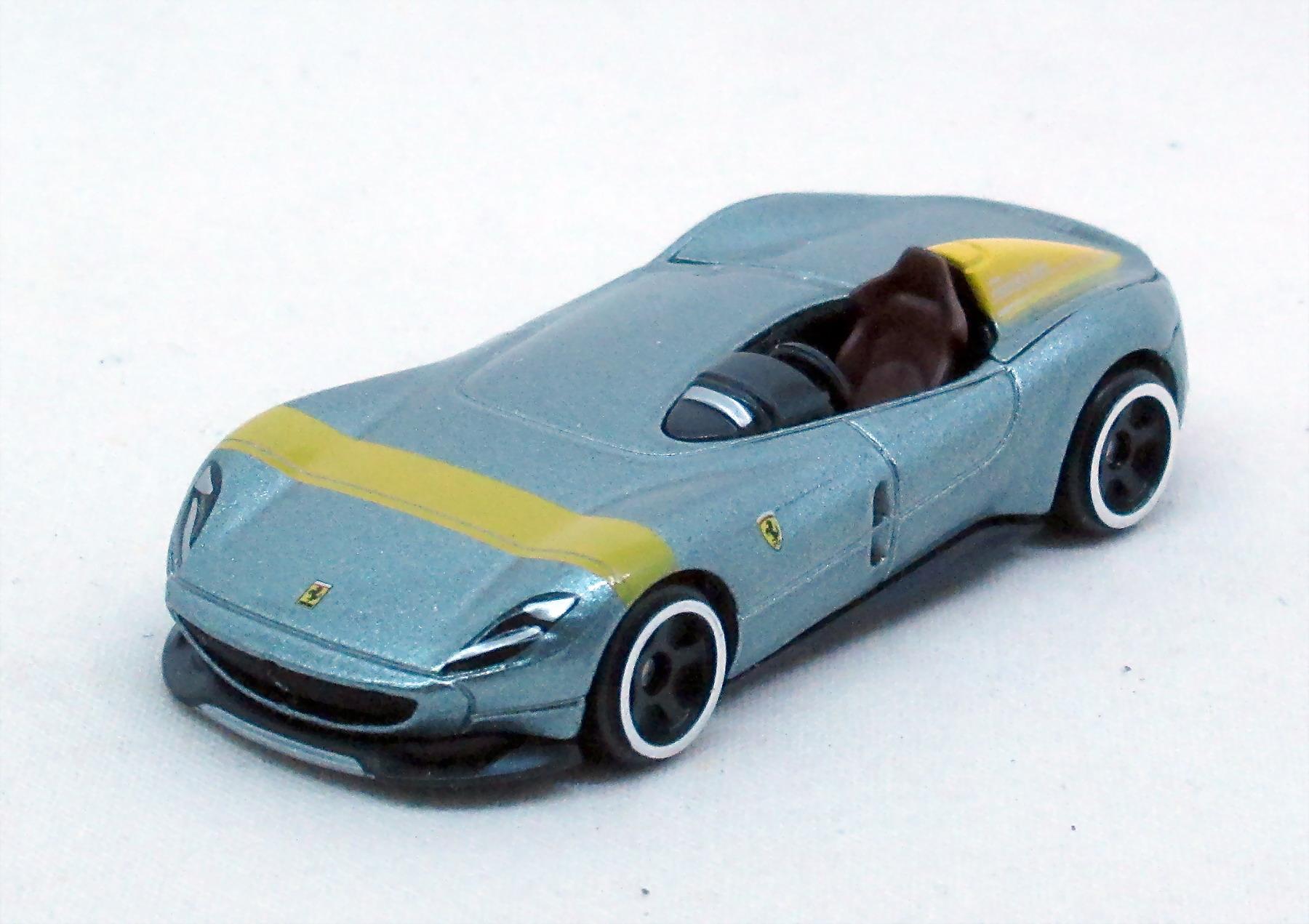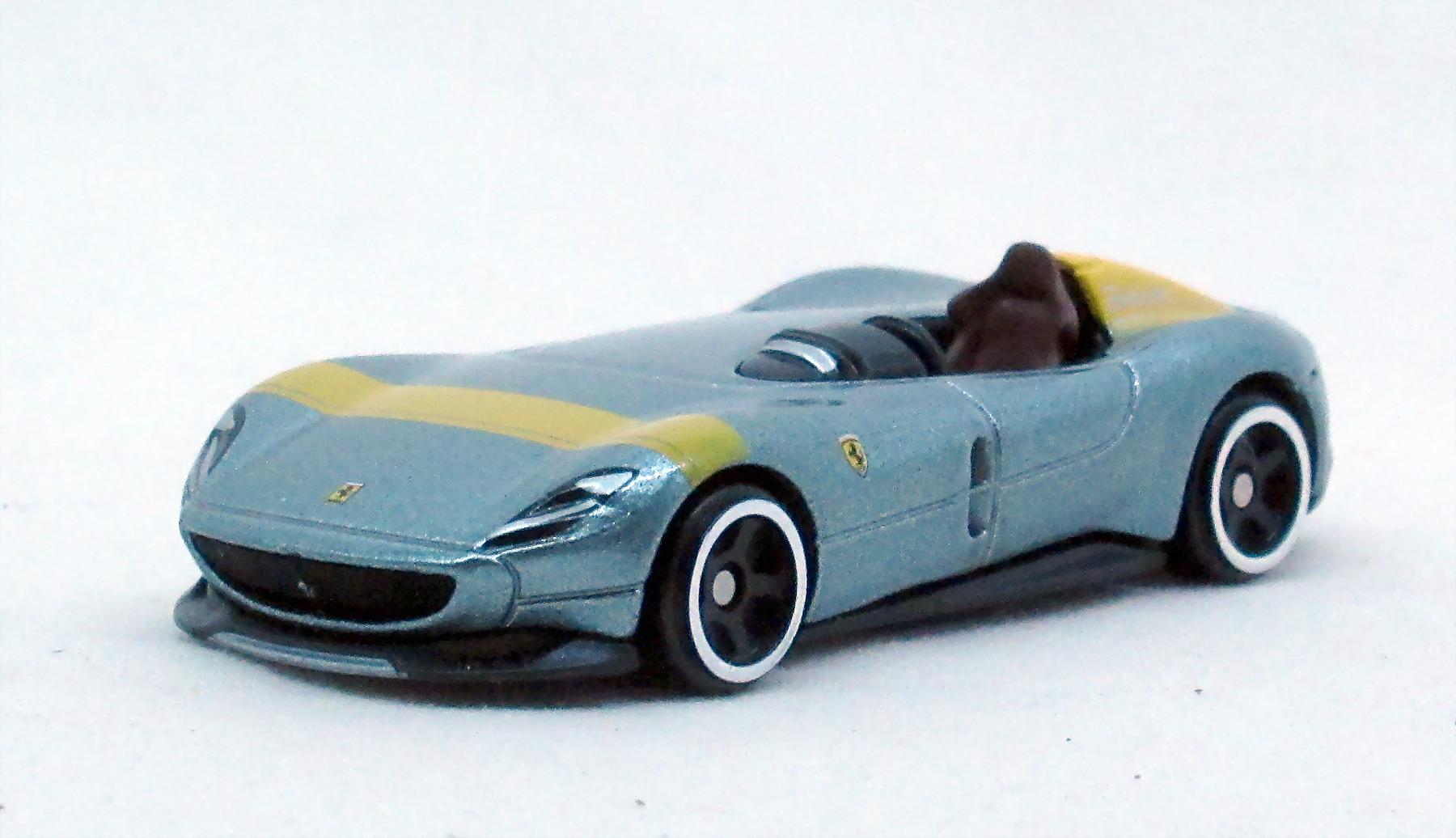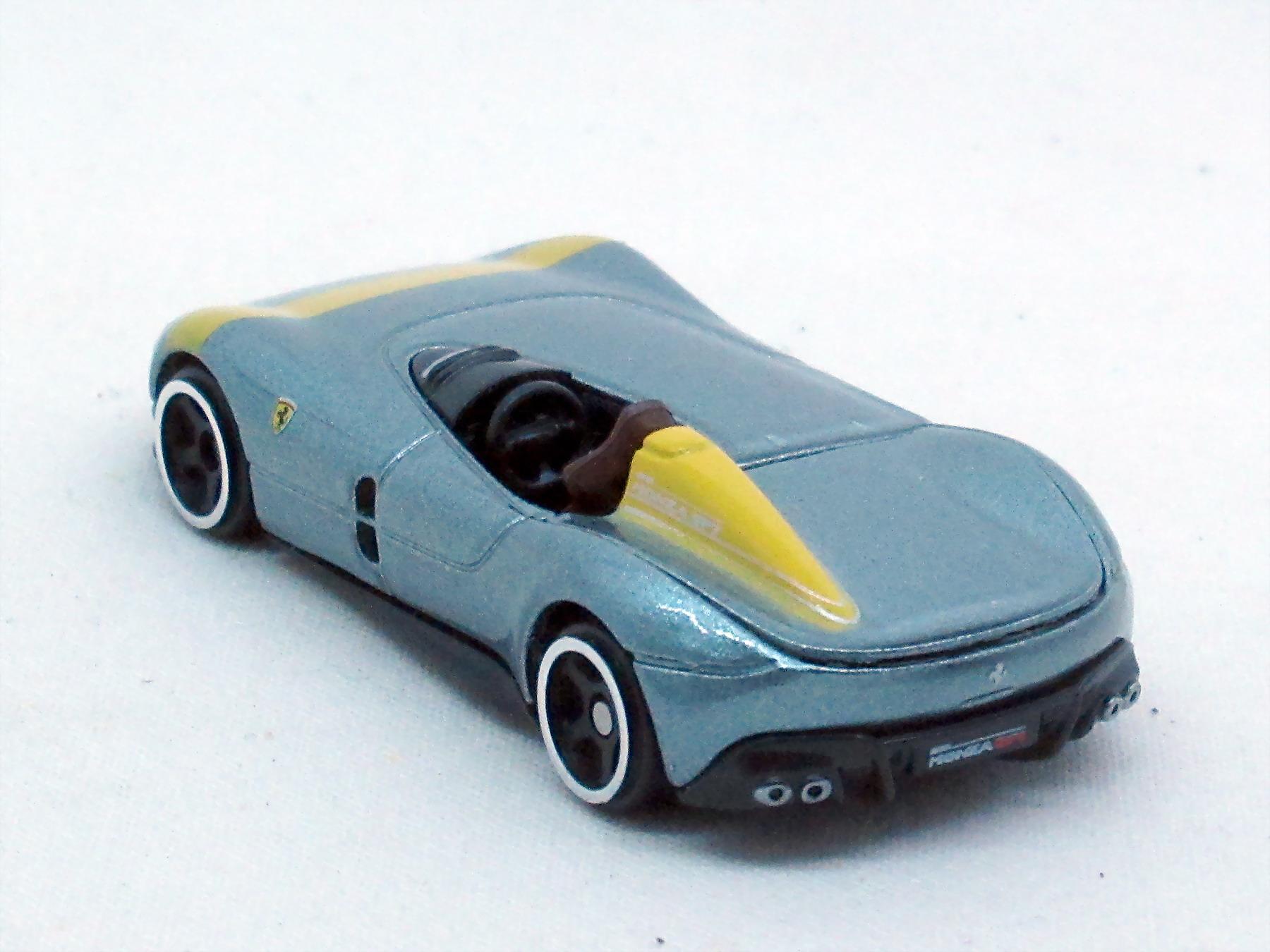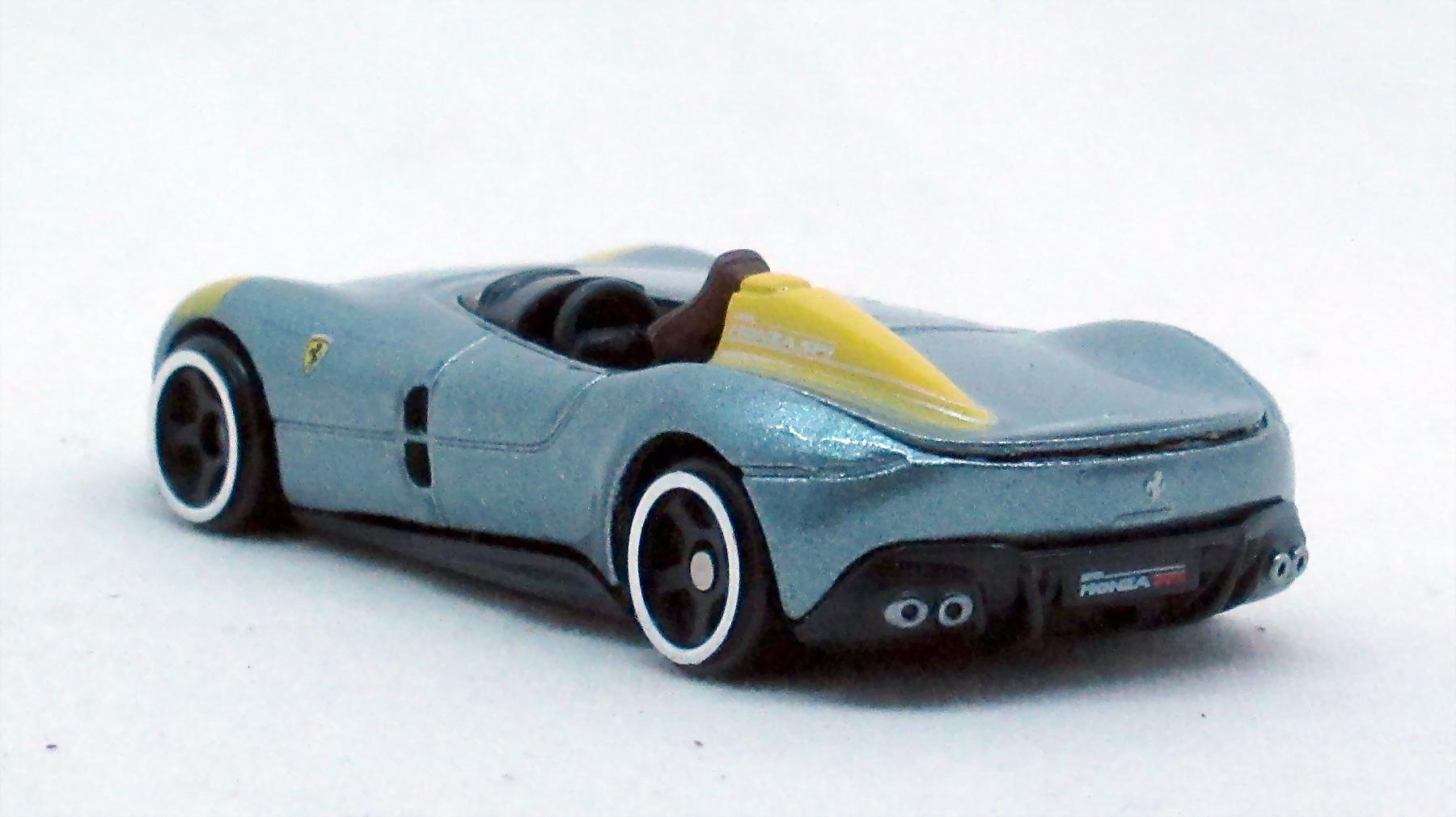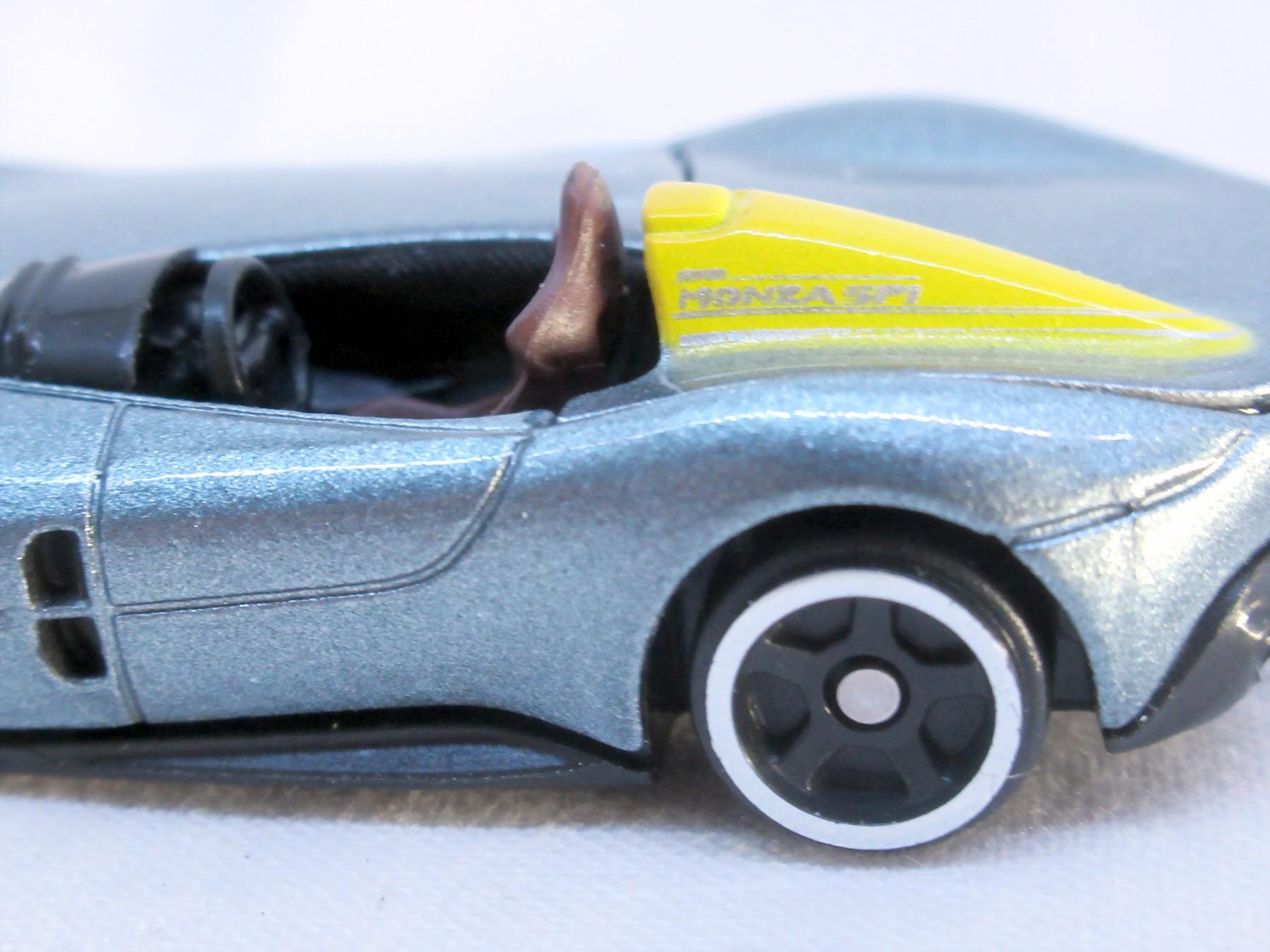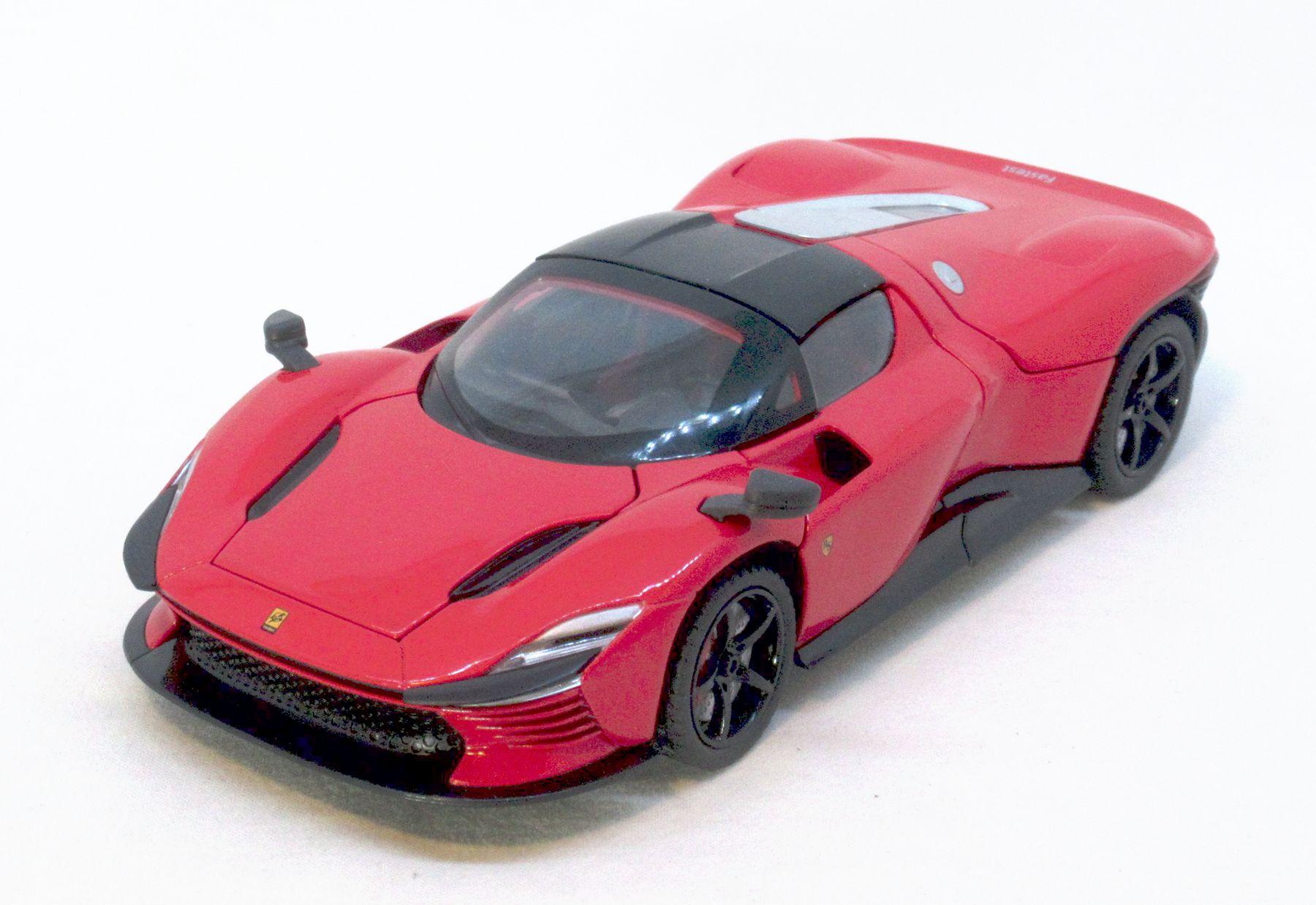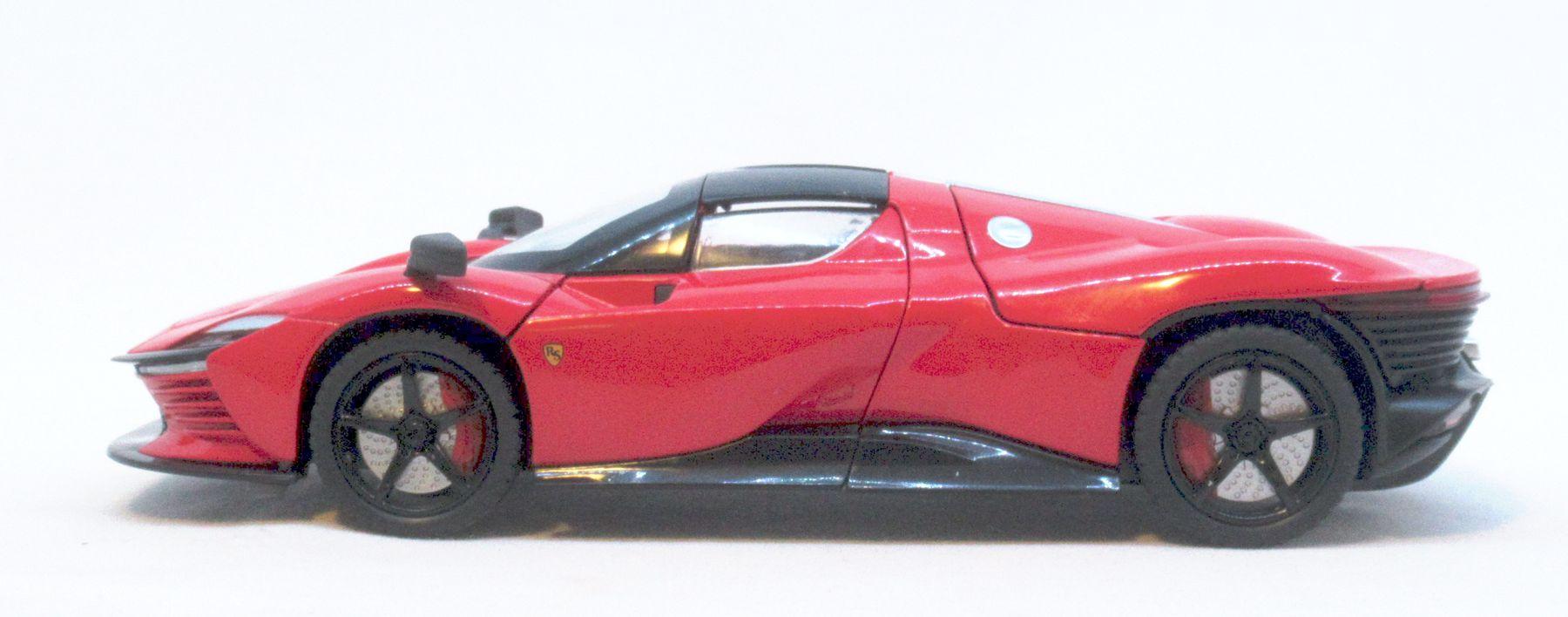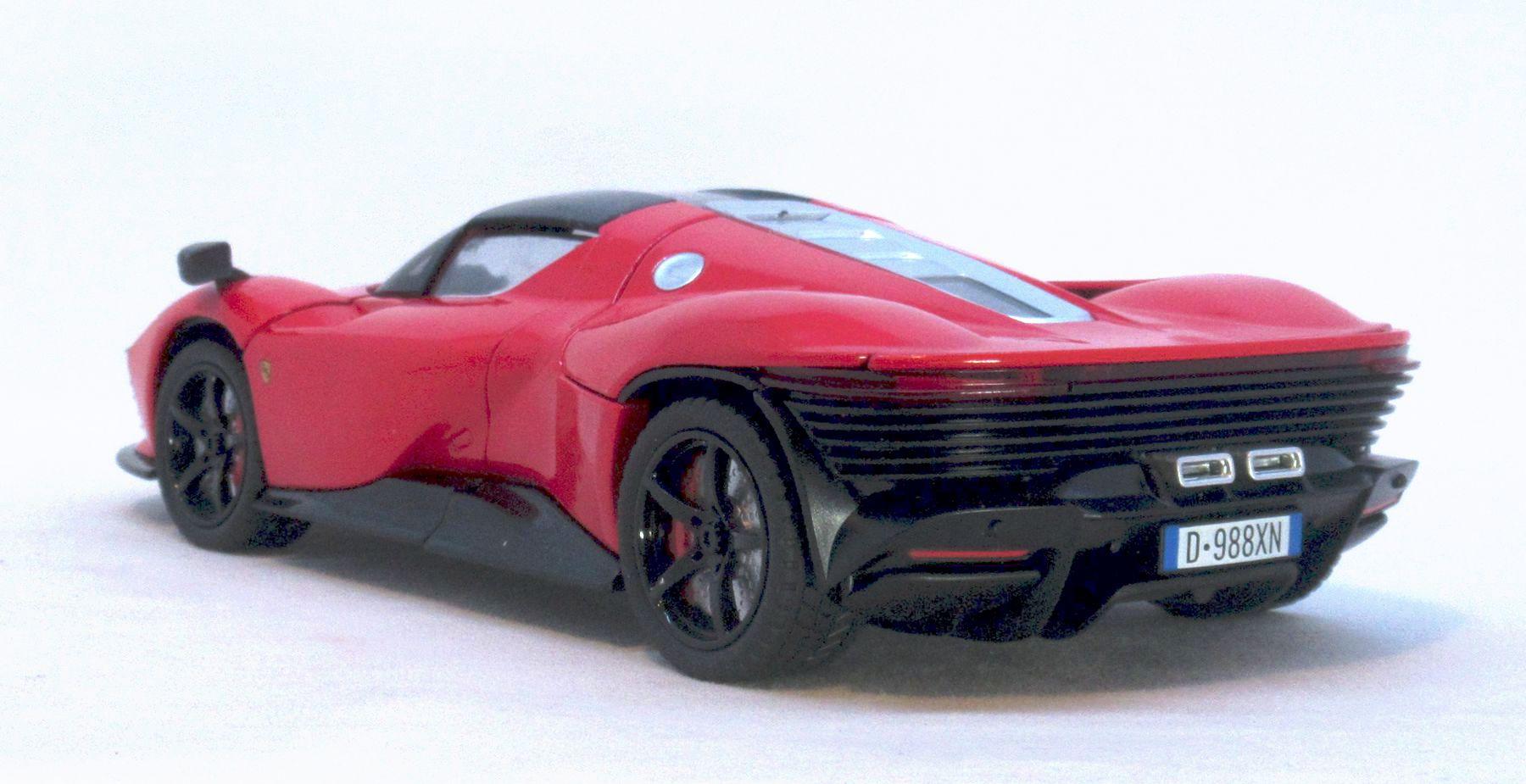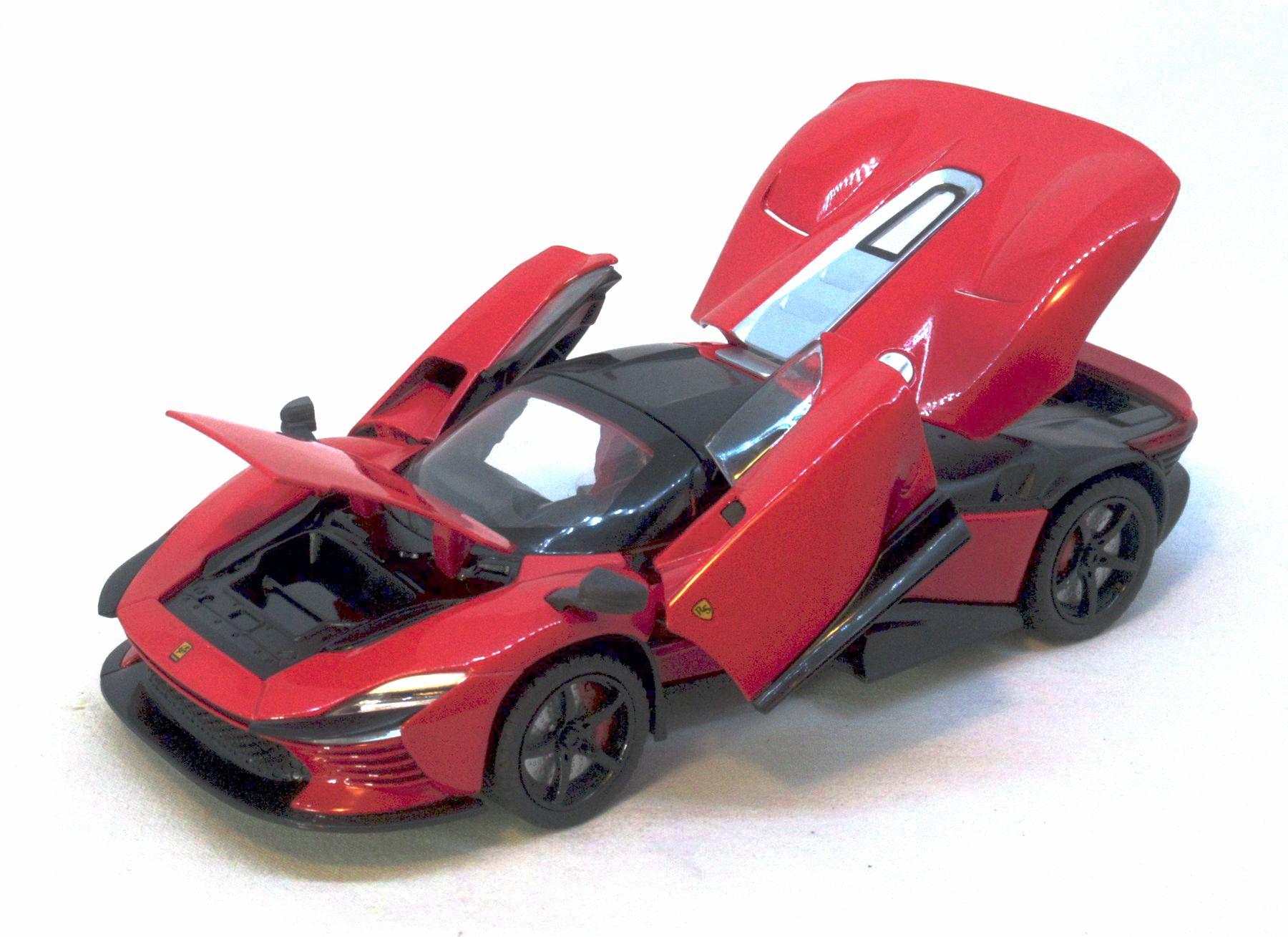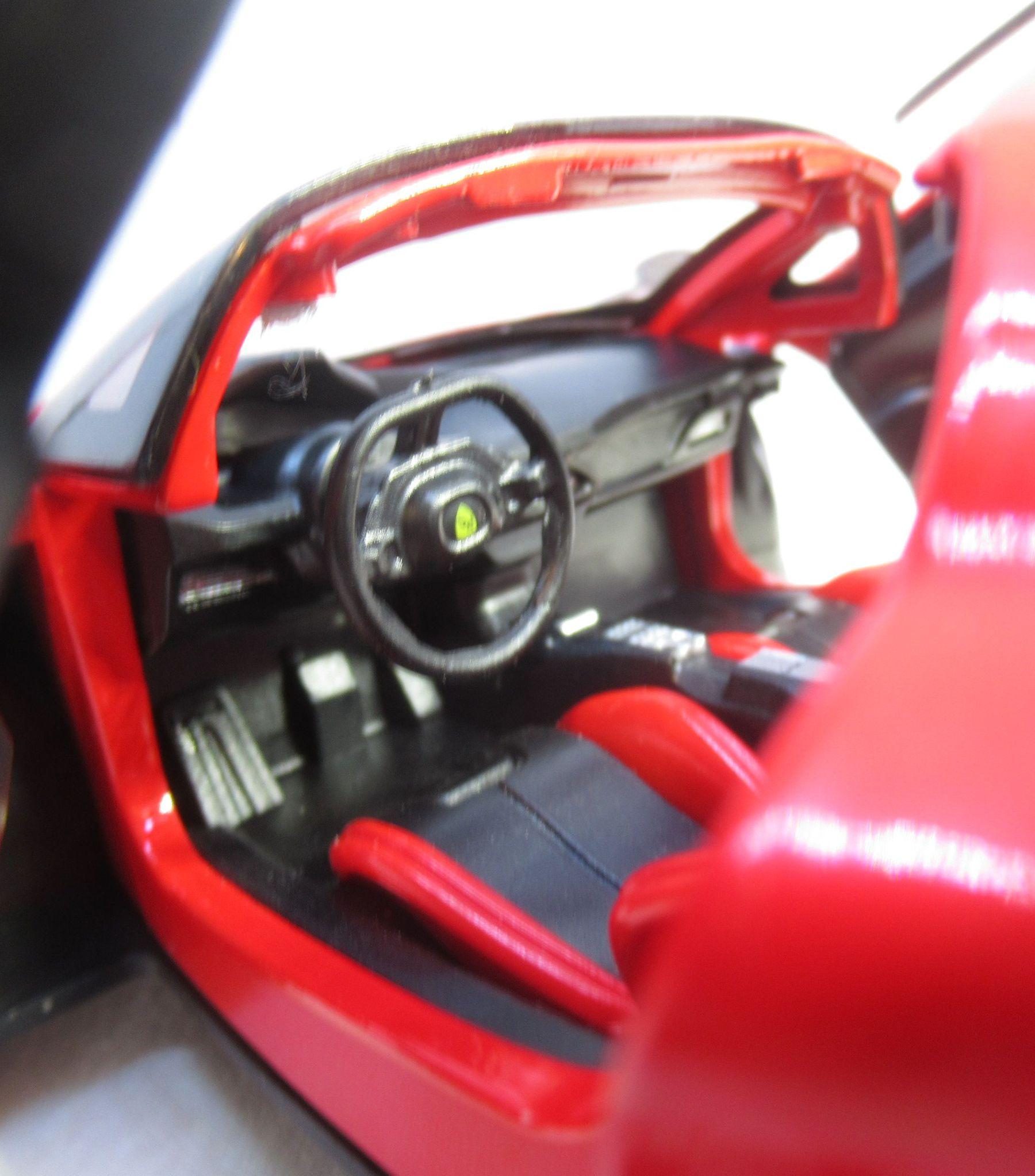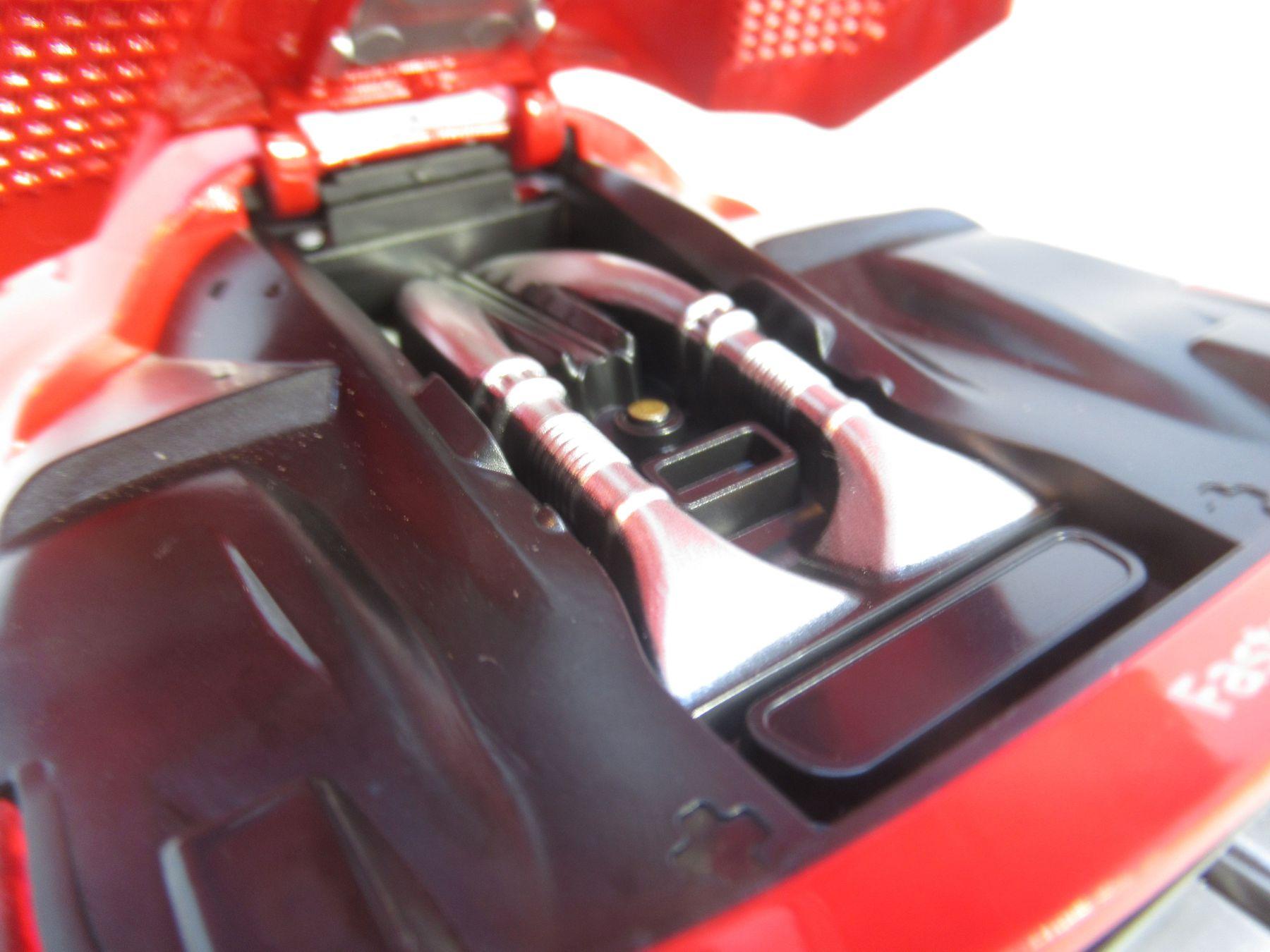-
Posts
481 -
Joined
-
Last visited
caapa's Achievements

MCM Avid Poster (5/6)
-
Audi S1 e-tron quattro Hoonitron 2021 The Audi S1 e-tron quattro Hoonitron was developed exclusively and uniquely for American drift artist Ken Block. "It was about creating a modern, all-electric interpretation of the S1 Pikes Peak.” told one of the designer team. The timeline was extremely tight. Normaly takes a design process one to one-and-a-half years, the team only had four weeks from the first drawing to the final design. The Hoonitron has two Formula E-derived motors, one for each axle, producing a combined 671 horsepower and an 800-volt, 57.6 kWh battery system. Top speed or acceleration not disclosed publicly by Audi, but Ken Block noted it was "capable of spinning into a donut at 93 mph (about 150 km/h) directly from a standstill." And there's a bad news: the Audi S1 e-tron quattro Hoonitron is a one-off. The good news is you can buy in 1:64 scale even a dozen. The model is made by Top Model/China in 1:64 scale. Enjoy the pictures.
- 447 replies
-
- conceptcar
- showcar
-
(and 1 more)
Tagged with:
-
Up Date: Bburago made a 1:24 model too. I purchased one as it was on the shelves in store. Some weeks later I saw on a chinese site the same but with trunk and lid to open too. I checked my one and that has openable all - they are blocked from inside only (last photo). So if somebody would like to customize this variant with a detailed enginebay and trunk this simple one is a good base. Enjoy the pictures.
- 447 replies
-
- conceptcar
- showcar
-
(and 1 more)
Tagged with:
-
Thrust SSC 1997 Richard Noble approached the speed of sound, now it just had to exceed it. He and his team chose two Rolls Royce Spey turbofan jet engines with a net thrust of about 50,000 pounds of force and placed the driver between tham in the middle. This layout didn`t give enough place for steered front wheels, so a rear wheel steering was necessary. The design team built a modified Mini with a similar wheel configuration to the full-sized car, scaled down to demonstrate and test the concept even on low-friction surface, proving it could work under such circumstances. Finally, the vehicle was equipped with two rear steered wheels behind each other, in accordance with the four-wheel requirement. The unique system, which includes an advanced steering computer and the use of steering dampers, provides small, precise trimming corrections rather than sharp turns. More this design ensures stability by having the steering's center of rotation behind the center of mass, creating a natural tendency to return to a straight line. On 15 October 1997, the car was wheeled out onto Black Rock Desert, Nevada, USA. Thrust SSC with Andy Green in the driver`s seat started its first run a little after 9am and run the measured mile in both direction with an average of 763mph (1229 km/h) namely 1.02.Mach, breaking the sound barrier on both runs. After the joyous cheering and celebration, Andy described the vehicle's stability as challenging and unstable. He noted that the car was more stable during deceleration, and any sudden instability would require him to throttle back to slow down. So this is a record arrived not only press the throttle but some times lift it. The car is currently on display at the Coventry Transport Museum. When I visited the Museum the Thrust 2 was only free visible, the SSC was behind closed doors. My son run to look somebody for help and he found a nice caretaker and he opend for us the door. The vehicle is huge but the most immpresive was that the exhaust fumes from the RR engines and dust kicked up stripped the paint off to bare metal at both sides rear of the car. The model is made by Lledo in 1:99 scale. The model show the vehicle in condition before the run. Enjoy the pictures.
- 447 replies
-
- 2
-

-
- conceptcar
- showcar
-
(and 1 more)
Tagged with:
-
Trust 2 1983 Richard Nobles Thrust 2 is centred around a single Rolls-Royce engine. Literally. The jet had to lie in the middle of the car. Thing is, above 600mph, cars are awfully sensitive to squiffy weight distribution, so Noble did the sensible thing and mounted two identical cockpit on the side of the engine, one for the driver the other for a passanger. The single Rolls-Royce Avon jet engine had 6500 pounds of thrust but during the project the engine was replaced by a more powerful Avon 302 with 17.110 lbs thrust with afterburner. The vehicle also featured a robust safety system, two parachutes to slow the car down from high speed and disc wheel brakes controlled by a pedal for stop from lower speed. The driver wore an oxygen mask and an enclosed helmet for impact and fire protection. Separate fire extinguisher systems were in place for the driver's compartment and engine. The wheels are from solid aluminum to withstand high speeds. Richard Noble achieved an average speed of 633.468 mph (1019.468 km/h) over two runs in the Black Rock Desert, Nevada. The fastest single run was 650.88 mph (1047.490 km/h) During the run he arrived 200 mph in about 9 seconds, and 0 to 400 mph in roughly 20 seconds. The record car is on display at the Coventry Transport Museum in Coventry, England. The model is made by Lledo in scale 1:80. Enjoy the pictures.
- 447 replies
-
- 1
-

-
- conceptcar
- showcar
-
(and 1 more)
Tagged with:
-
Spirit of America Sonic I 1965 Craig Breedlove set his first record on August 5, 1963, at Bonneville with his 3-wheeler jet propelled Spirit of America. He was the first man to set an average speed of over 400 mph (640 km/h) during a Land Speed Record attempt. But the FIA rules for a land speed record of cars required four wheels. So this record was not accepted as a record. After all of these Breedlove designed the Sonic I which was a four-wheeled - this design provided greater stability – and also jet-powered land speed record vehicle. The new car driven by Breedlove, set a new record of 600.601 mph on November 15, 1965. The power came from a General Electric J79 turbojet engine, the same type used in the F-4 Phantom II fighter jet, producing 15,000 pounds of thrust. On the wheels were special Goodyear tires and disc brakes, the discs measured 420 mm in diameter and are capable of operating up to a maximum temperature of 1,200 °C. The car was equipped with an additional aerospace-style drag chute, as well as an onboard air supply for the driver. The Sonic I set another record too. It was also used by Breedlove's wife, Lee, to set a women's land speed record of 308.506 mph in the same year. Following its record-breaking run, the Sonic I was displayed at prestigious institutions like the Indianapolis Motor Speedway Museum and the Petersen Automotive Museum. The Sonic I vehicle was sold at auction in 2025 to a private individual. It's whereabouts are unknown. The model is made by Lledo in scale 1:100. Enjoy the pictures.
- 447 replies
-
- 1
-

-
- conceptcar
- showcar
-
(and 1 more)
Tagged with:
-
This is a realy eye candy ! I like these old Crysler 300`s and have in my collection in 1:64: - 300/1955 - 300 B/1956 - 300 C/1957 - 300 F/1960 - 300 K Convertible/1964. I know there are the 300 D/1958 and 300 J/1963 but only in mint, in blister + horrible postage fees.(+27% VAT import cost) I remain in the hunter's long, silent wait.
-
Mickey Thompson Callenger I 1960 Mickey Thompsons attemp to arrive the 400 mph speed on the morning of September 9th 1960, Bonneville Salt Flats. was a success but was no official Word Record. What happened ? The Challenger was powered by four supercharged Pontiac engines total 3,000 horsepower. Each of the four GMC 6-71 supercharged engine powered a single wheel. The greatest technical challenge was to make four simultaneous clutches and gearshifts operated by one single foot pedal respectively a single hand lever positioned in the cockpit to Mickey's right. And in the meantime had to be kept the Challenger on course of the salt track. His only view of the salt came through a 4-inch square piece of glass that had been taken from a face shield of a welder's helmet. Despite all this, the human factor worked 100%. In the first run Thompson arrived 406,60 mph and became the first American to break the 400 mph barrier. According the rules a second run must be done in the opposite direction within one hour. The parachute-brake system was new installed, the wheel bearings were packed in ice to keep things cool and the car started to the opposite direction. As Fritz Voigt said: „Coming back, you always went faster toward the highway, but when he went into Second with the four Cadillac transmissions, three engaged and one didn't . . . it stayed in Neutral [thereby blowing the engine it was attached to when it revved up with no load on it] . . . we would have massacred the record.” The Challenger I was retired from service and put into storage, the location is not publiced. Mickey Thomson's son, Danny Thompson, successfully set the piston-powered land speed record in 2018 by completing these two runs in his father's Challenger II. The model is made by Hotwheels in scale about 1:60. (based on height size and measured value) Enjoy the pictures.
- 447 replies
-
- conceptcar
- showcar
-
(and 1 more)
Tagged with:
-
Railton Mobil Special 1947 John Cobb took the land speed record with his Railton Special designed by Reid Railton at 353.30 mph being the first to break the 350 mph barrier in 1938. After the Second World War further development and sponsorship by Mobil Oil led to renaming the car as the Railton Mobil Special. In 1947 John Cobb arrived a new record speed of 394.19 mph on Bonneville Salt Flats. The LSR car was powered by two supercharged Napier Lion aircraft engines - big, multi-bank W12s, developing a combined 2,700 hp. Each engine drove a three-speed transmission and both incorporated an 11 inch (279 mm) hydraulic drum brake. Just forward of the rear wheels was a pneumatic airbrake activated with the brake pedal of the hydraulic ones. After the run Cobb noted: the Railton Mobil Special lived in an abstraction permanently. You read the salt, not the steering. You listen for a flutter in the airflow. You breathe evenly. And you leave a pencil-thin wake in the quietest place on earth. Todays hypercar owners are say 150 mph feels like a warm-up, but everything after 200 becomes abstract. The Railton Mobil Special is currently on display at Thinktank, Birmingham Science Museum, England. Model is made by Lledo in 1:87 scale. Enjoy the pictures.
- 447 replies
-
- 2
-

-
- conceptcar
- showcar
-
(and 1 more)
Tagged with:
-
GOOD JOB. I realy enjoy the pictures. Thank you for sharing.
-
I like it ! More pictures ?
-
Campbell-Railton Bluebird 1935 Sir Malcolm Campbell's Railton Bluebird became the first car to exceed 300 miles per hour, reaching 301.129 mph at the Bonneville Salt Flats in Utah on September 3, 1935. The car is designed by Reid Railton with a 36.7-liter, supercharged Rolls Royce R V12 engine, 2300-horsepower, with rear wheel drive - on the axle double wheels and tires. The body is a streamlined, aluminum-honeycomb constuction, with double wishbone independent suspensions and Girling disc brakes supplemented by a hydraulic airbrake. The tires were 1321 mm diameter, pressure exceeded 100 psi, with higher pressures 130-160 psi used for record attempts. The original 1935 Campbell-Railton Bluebird Land Speed Record Car is exhibited at the Motorsport Hall of Fame of America at the Daytona International Speedway Tour Center. A replica is on display at the Lakeland Motor Museum in Cumbria, England. The model is made by Lledo in 1:80 scale. Enjoy the pictures.
- 447 replies
-
- 3
-

-
- conceptcar
- showcar
-
(and 1 more)
Tagged with:
-
Rolls Royce Phantom I 1929 Initial Rolls Royce generations from the factory consisted of the chassis, engine and transmission – named “rolling chassis”. Likewise the company did not fit bodies to the chassis in the Phantom`s first four generations too. Instead, clients worked with coachbuilders to design and build custom bodies for their specific need. So you could get a Phantom I chassis with a new 7668 cc, straight-six , overhead-valve engine, 95 hp with a four-speed manual transmission and improved front-wheel drum brakes. The top speed was about 80 mph. As the US market became increasingly important Rolls Royce decided to bring production to USA too. The new factory was in Springfield, Massachusetts and they produced the Phantom I lightly modified with 3-speed-transmission and left hand drive. From 1928 they offered the car with horisontal shutters automaticaly opened at temperature. (I think enthusiasts are considered this sacrilegious on this side of the ocean) There was a total of 3,512 produced, 2,269 at Derby/England and 1,243 at Springfield. The Phantom nameplate is one of the oldest in the automotive industry, with the Phantom I being the foundational model for a century-long lineage of iconic vehicles. The model is made by Xinhaodi/China in 1:24 scale. Browsing on the net I probably found pictures and info about the original car of this model: it was licensed in New York City in 1929. At some point, the town car body was replaced by its current tourer body. From 1980 onward, the Phantom was in Switzerland, was restored completely between 2000 and 2012 and has since been registered in Germany. Enjoy the pictures.
- 447 replies
-
- conceptcar
- showcar
-
(and 1 more)
Tagged with:
-
Ferrari SF90 XX Spider 2023 The SF90 XX is the first XX variant that is street legal. The car is a significant evolution of Ferrari's plug-in hybrid hypercar, blending track-derived "XX" program technology with road-legal usability. It features a prominent fixed rear wing, a first for a street-legal Ferrari since the F40 and F50. This maximize downforce, to a total of 530 kg at 250 km/h. The SF90 is powered by a twin-turbocharged V-8 engine and three electric motors with a peak power of 786 hp. The eight-speed dual-clutch gearbox utilizes logic from the Daytona SP3 to improve gear-shifting sound and driving dynamics. In addition this is combined with a new Extra Boost feature for the electric motors, the total system output is 1016 horsepower. This Extra Boost is limited to the Qualify drive mode to speed upon exiting a corner. This instantaneous power can be used up to 30 times before the battery is depleted. The SF90 XX arrives a top speed of 320 km/h and accelerates to 100 km/h in 2,3 sec. On the other hand the high performance lithium-ion battery powers the three motors, guaranteeing a 25 km range in full-electric mode. Only 599 Spider convertibles will be produced for a $932,000 price each. They are already sold out. The model is made by NEWAO/China in 1:24 scale. Enjoy the pictures.
- 447 replies
-
- conceptcar
- showcar
-
(and 1 more)
Tagged with:
-
Ferrari Monza SP1 2019 The Monza SP1 is a celebration of Ferrari's racing heritage, specifically its open-top sports cars of the 1950s. It is the first model of Ferrari's new "Icona" series, a limited-production, single-seat sports car. The base is mainly the 812 Superfast, the 6,5 liter powerplant with 799 HP, the seven-speed dual-clutch transmission, the dashboard, etc. are from that. The top speed is a tad less than 360 km/h, acceleration to 100 km/h in less than 3 sec. The body design follows the 1950s „barchetta” layout – it means roof-less. A unique "Virtual Windshield" system uses airflow to create a buffer of air over the driver, mimicking the effect of a traditional windshield. But probably better to deside you use very fashinable sunglasses or goggles or a helmet with face-shield. Ferrari has thought of everything – the Monza comes with its own accessories. Cap, scarf, handshues and a Ferrari branded helmet made of carbon fiber. Only 499 units are produced, for $1,75 million each, without any extras and accessories. And no owner could buy more than one ! The model is made by Bburago in 1:64 scale. Enjoy the pictures.
- 447 replies
-
- conceptcar
- showcar
-
(and 1 more)
Tagged with:
-
Ferrari Daytona SP3 2023 The SP3's name and design are a direct reference to Ferrari's iconic 1-2-3 finish at the 1967 24 Hours of Daytona. The car pays tribute to this victory and the prototype cars built with its design and powertrain. The SP3 design features retro styling cues reminiscent of the 330 P4 but with modern aerodynamic elements and cooling solutions. With the wraparound windshield visibility is remarkably good, the rear mirors are with a camera addition completed. The seats are thin but well-shaped and fixed. So the pedal box that slides fore and aft. Only few roadcars were equipped with this feature despite the obvious space efficiency and the fact it centralises and stabilises one of the car’s primary masses, otherwise known as the driver and accompanying. The car is based on the LaFerrari Aperta chassis and uses a 6.5-liter naturally aspirated V12 engine derived from the 812 Competizione, producing 819 horsepower. The acceleration 0 – 100 km/h 2,85 sec and to reach 200 km/h 7.4 seconds. The top speed is 340 km/h. Ferrari has already sold all 599 units of the Daytona SP3 production, primarily to previous Ferrari owners and collectors. The price was around $2.2 million. The model is made by a NoName Chinese manufacturer in 1:22 scale. Enjoy the pictures.
- 447 replies
-
- conceptcar
- showcar
-
(and 1 more)
Tagged with:

